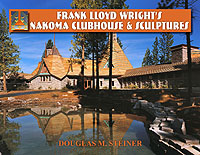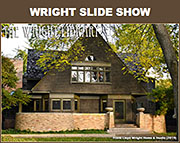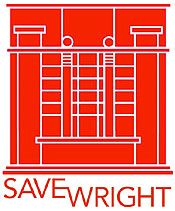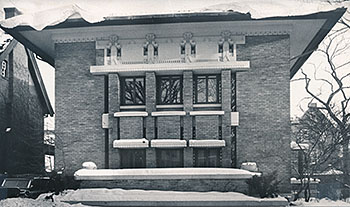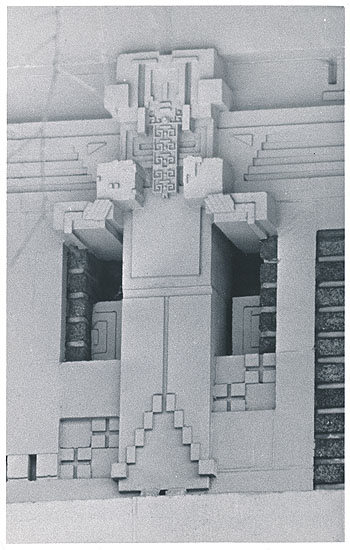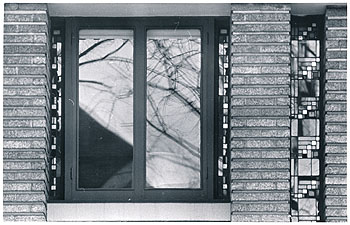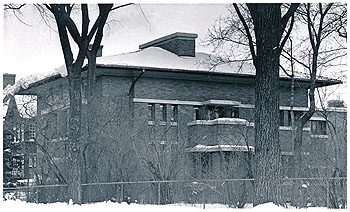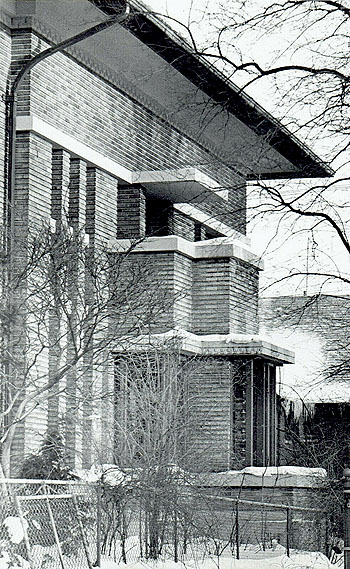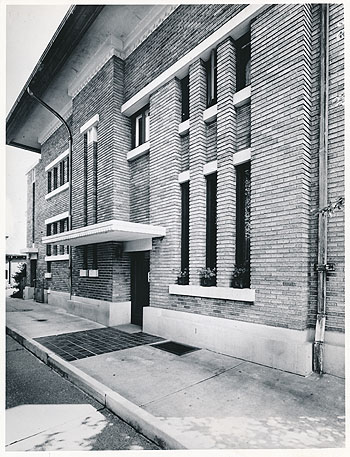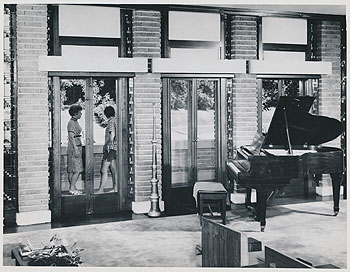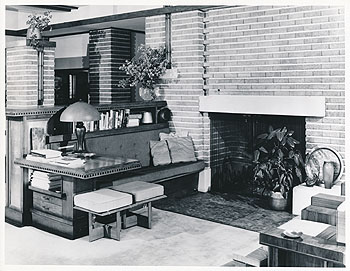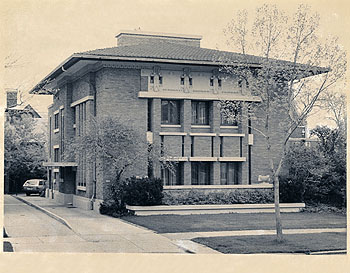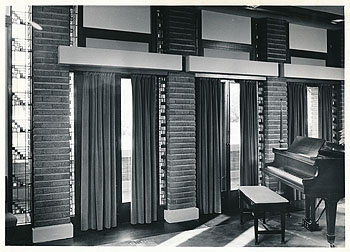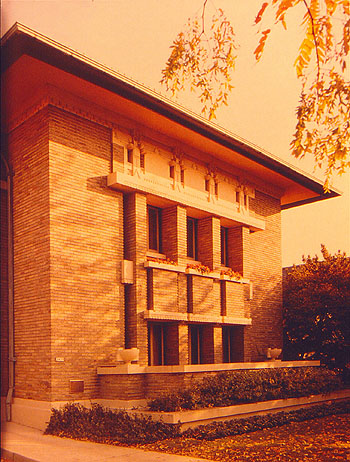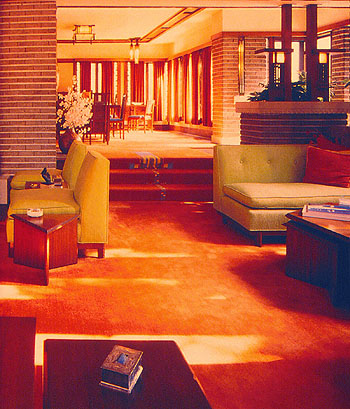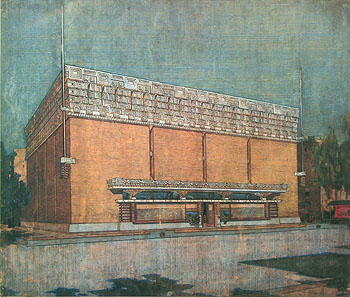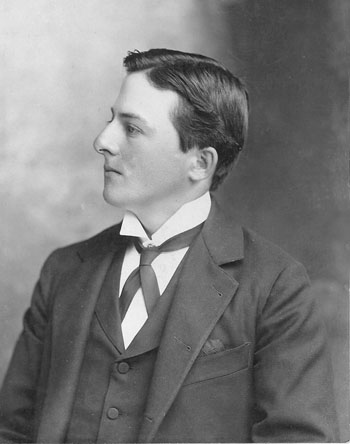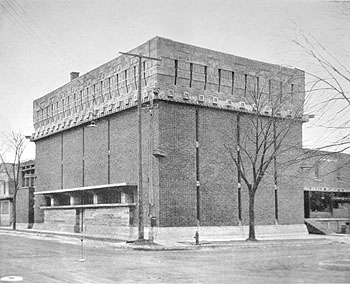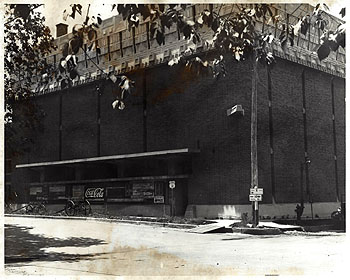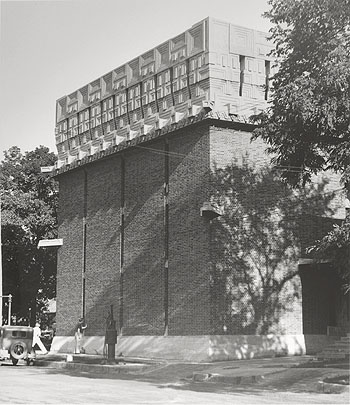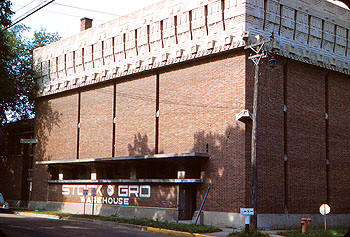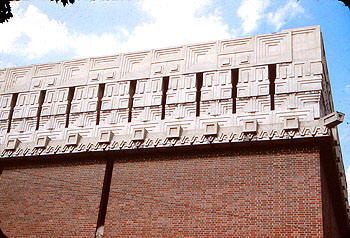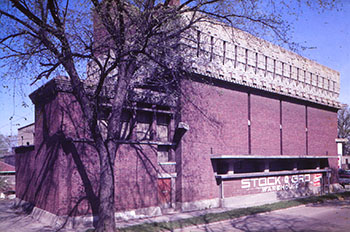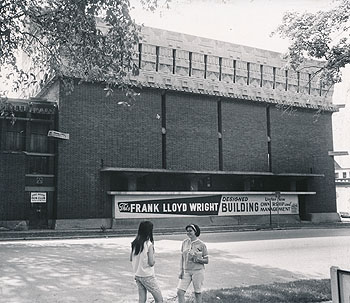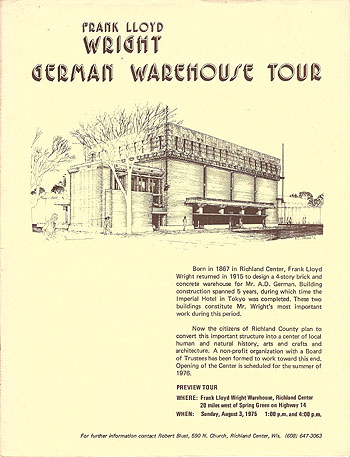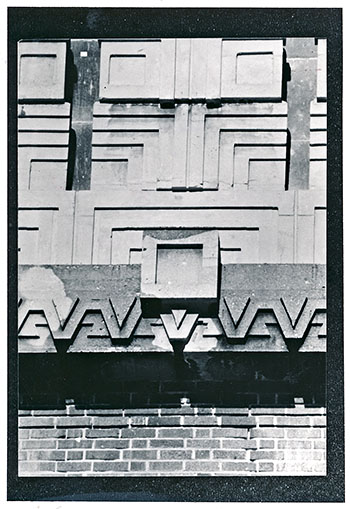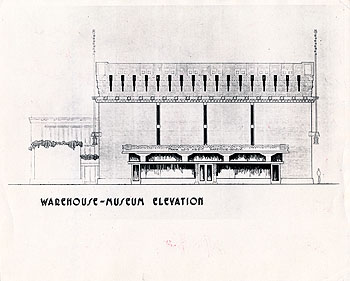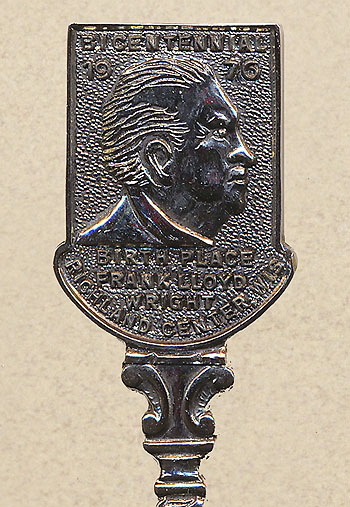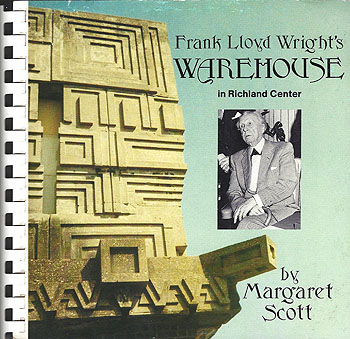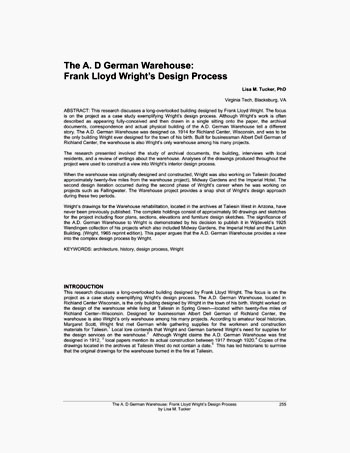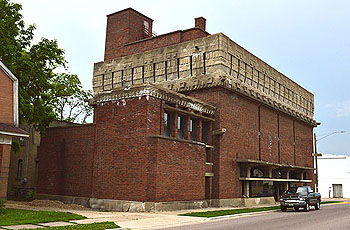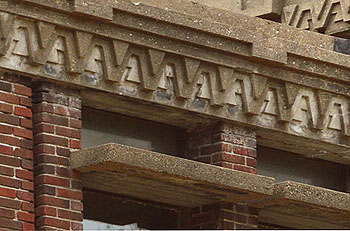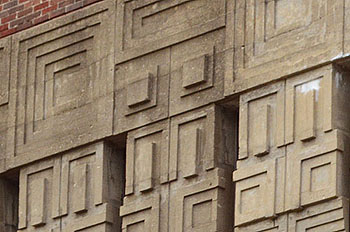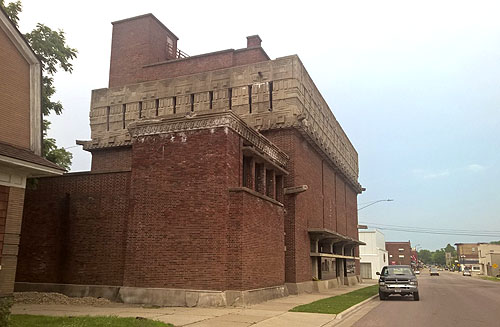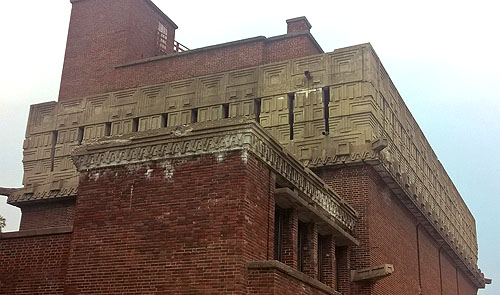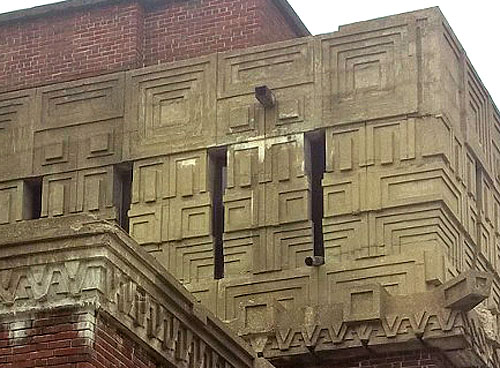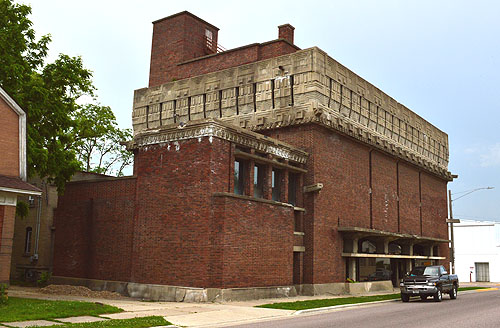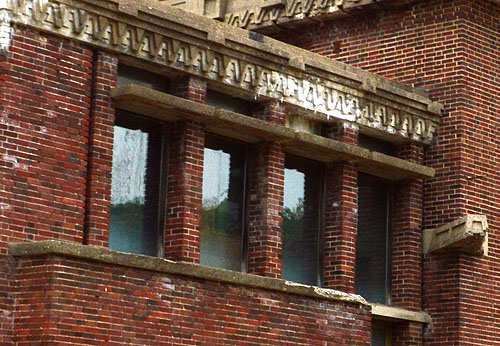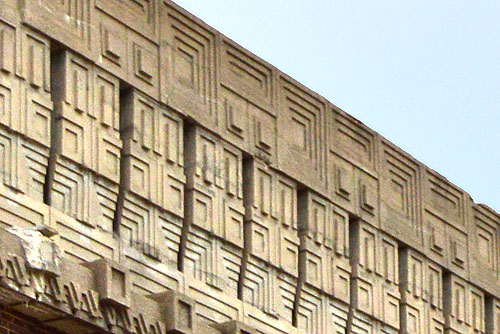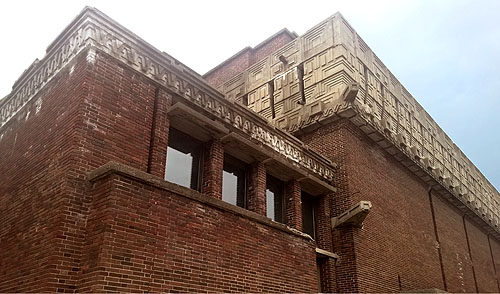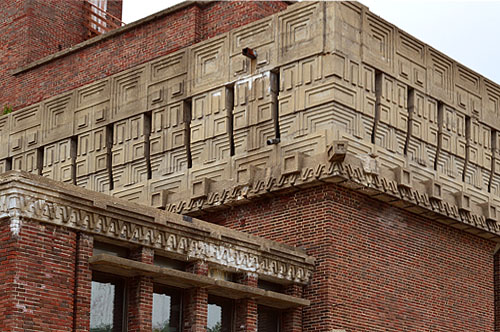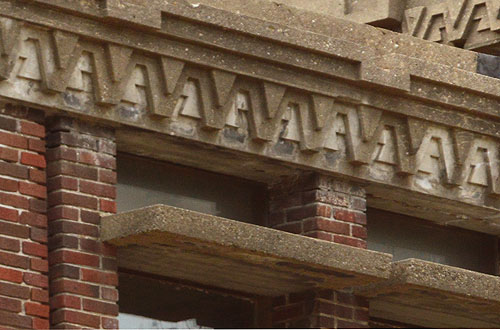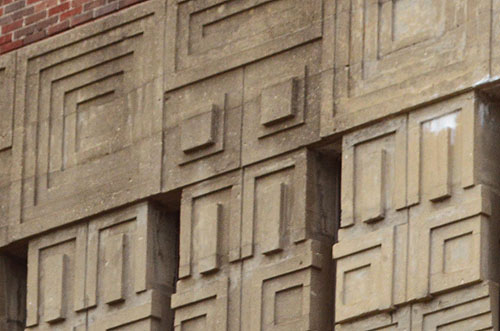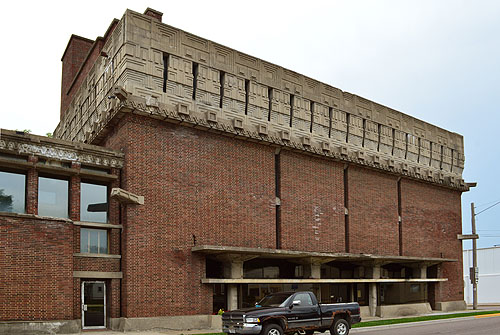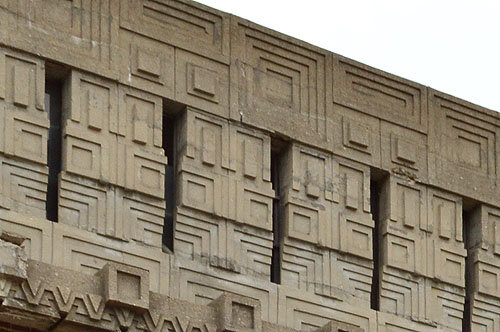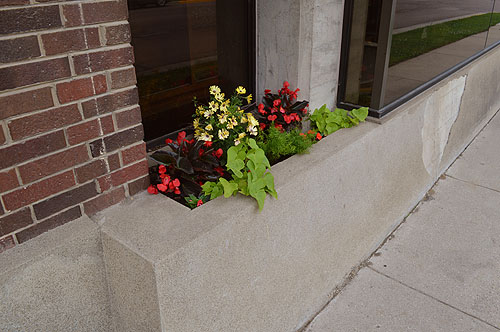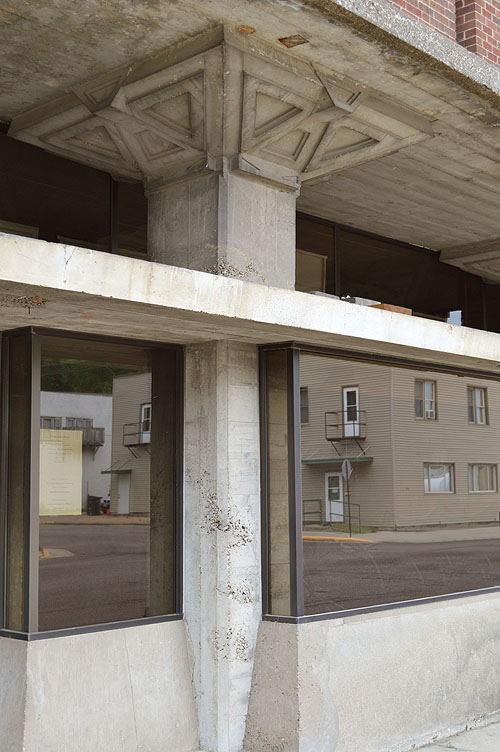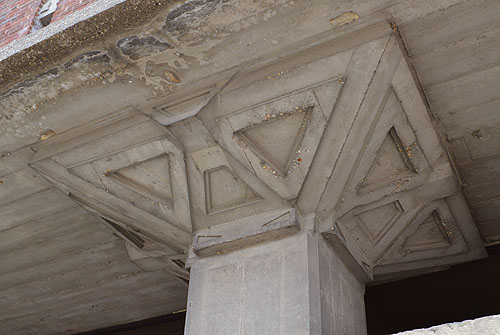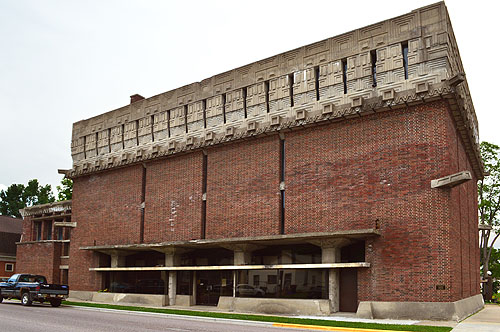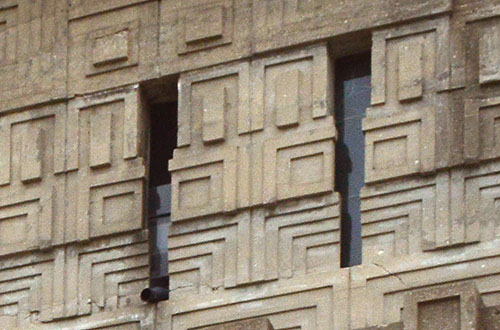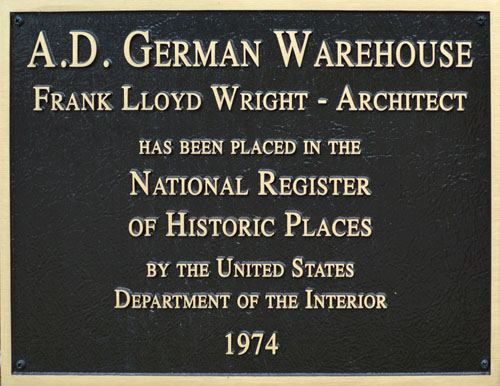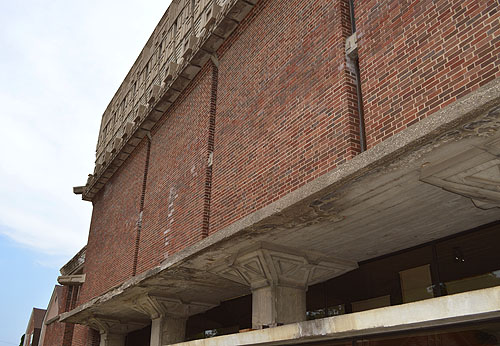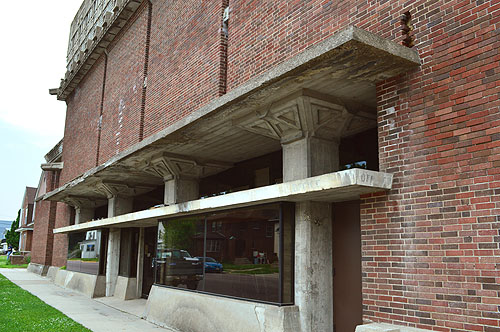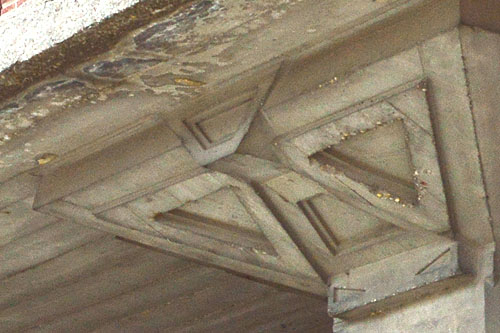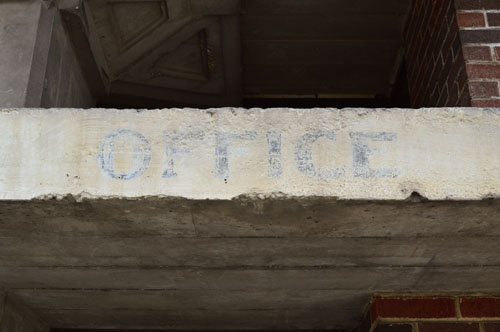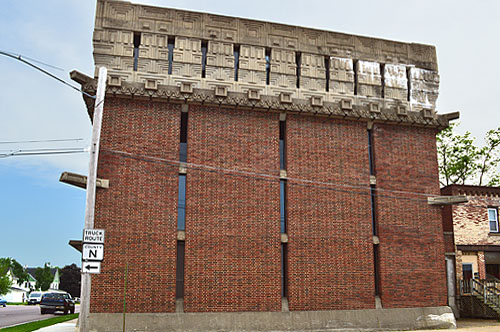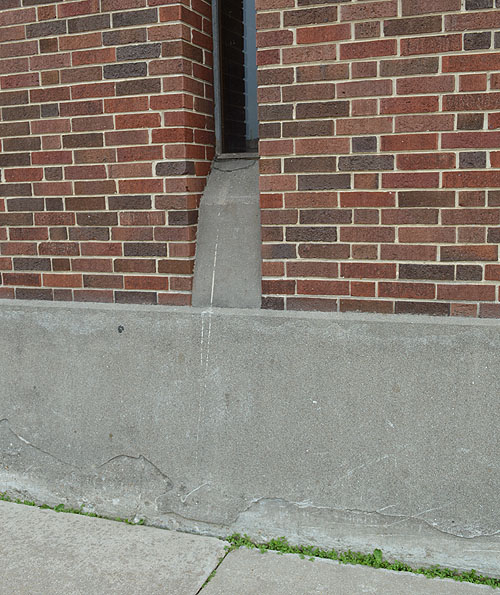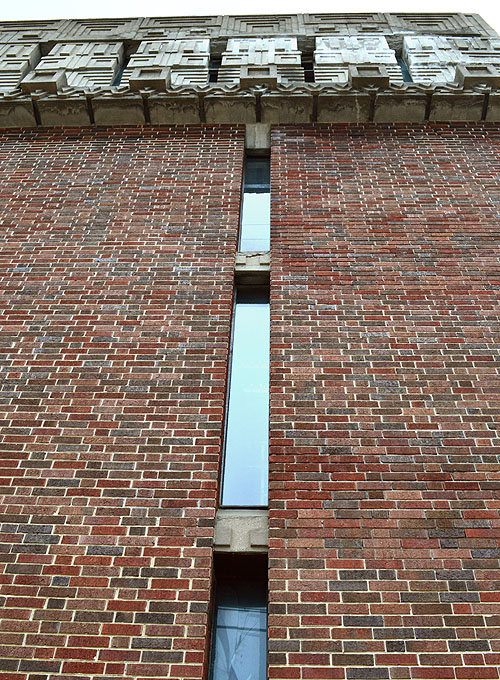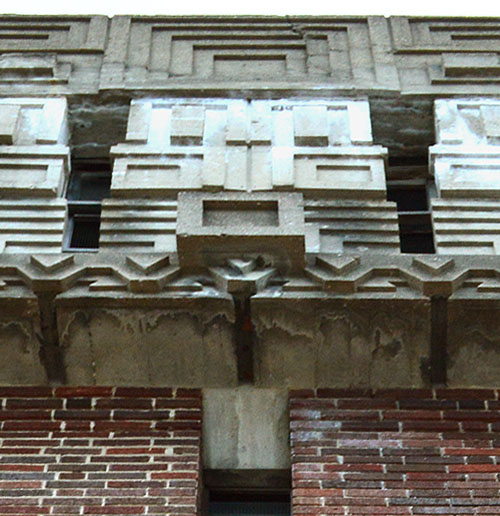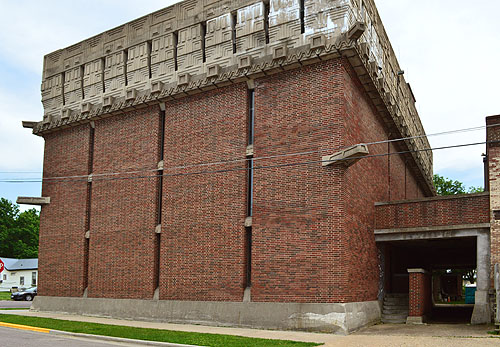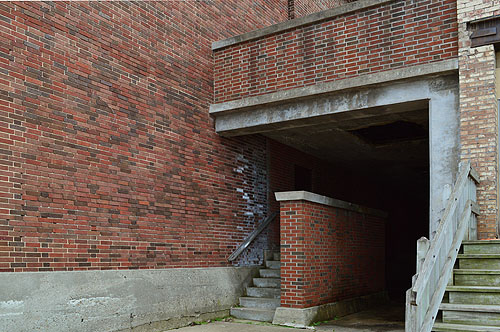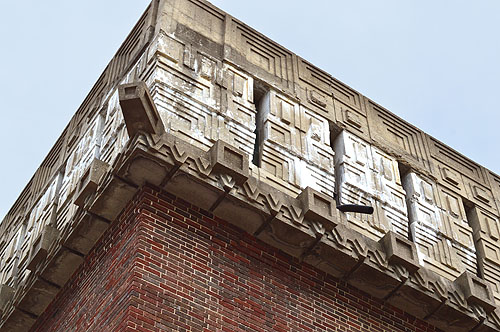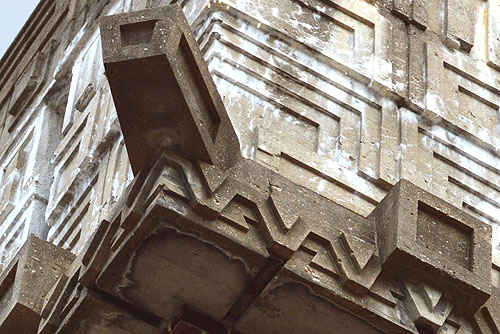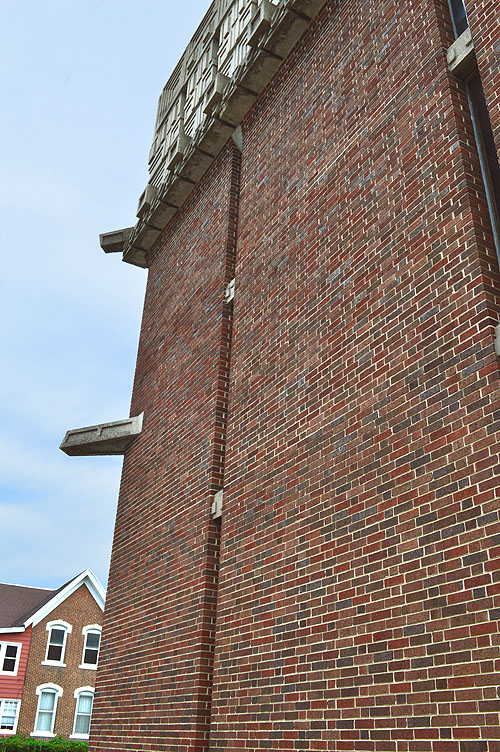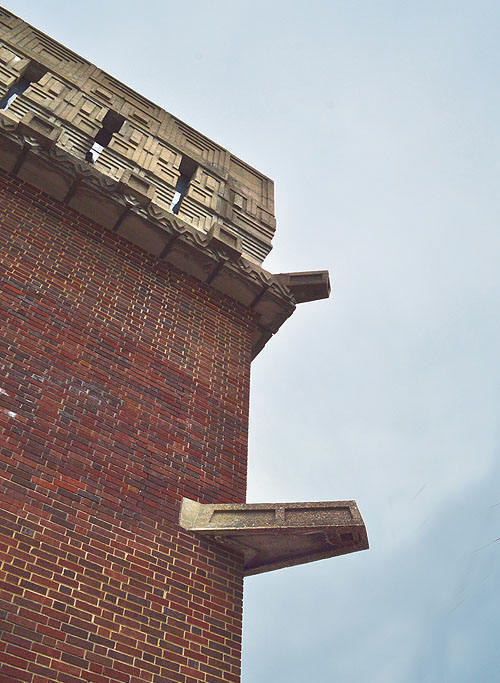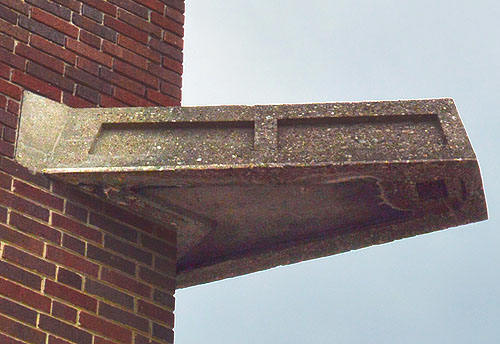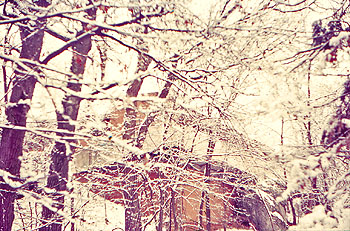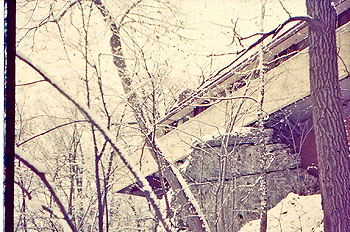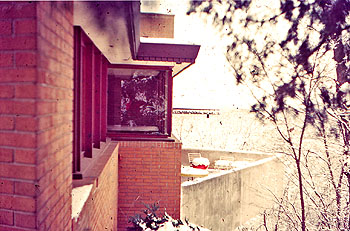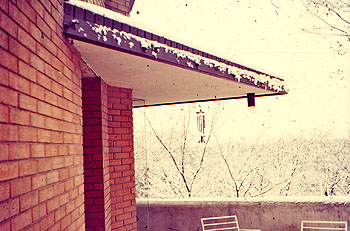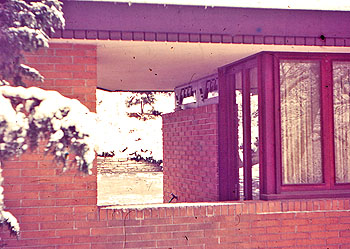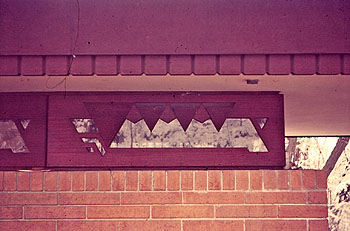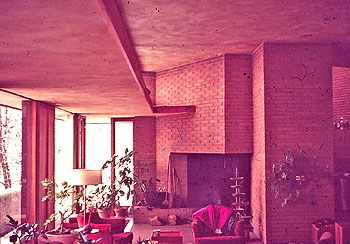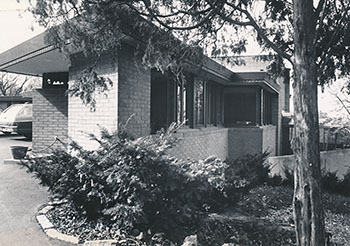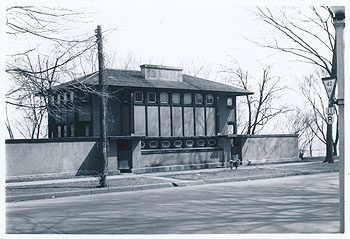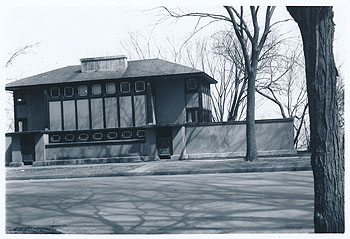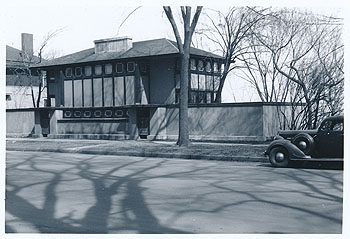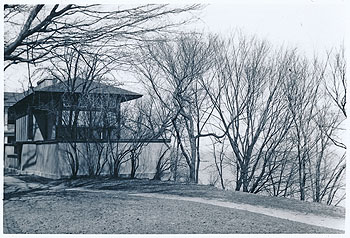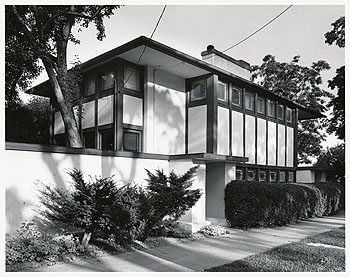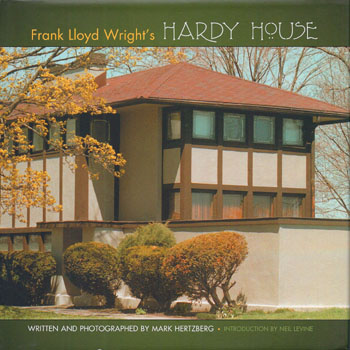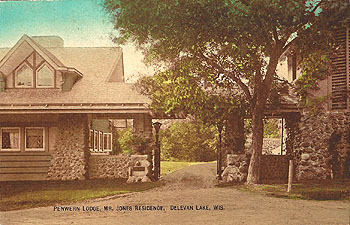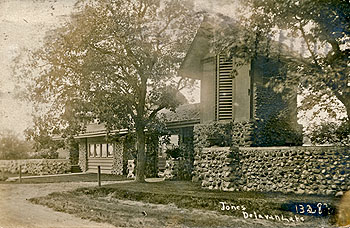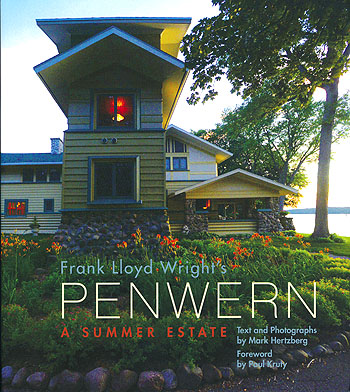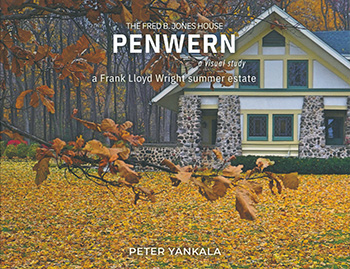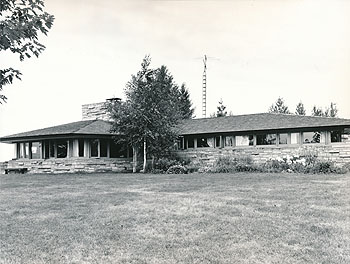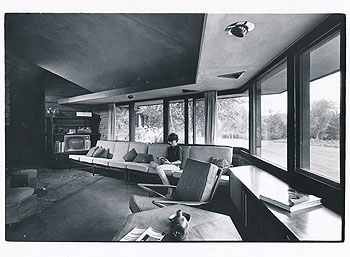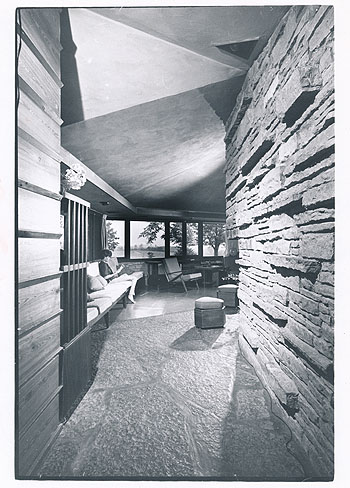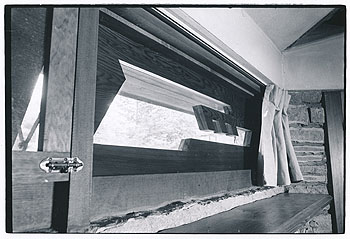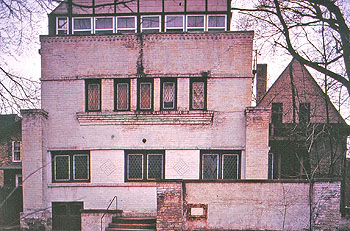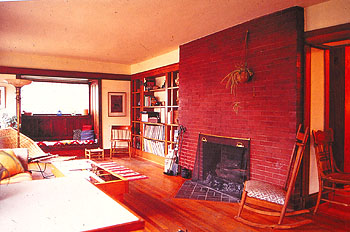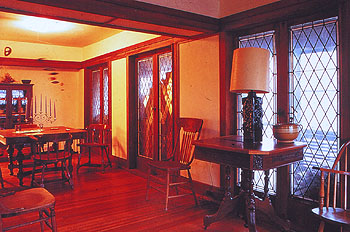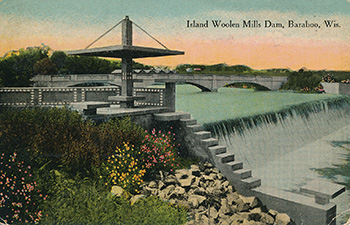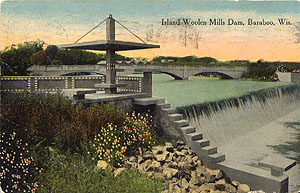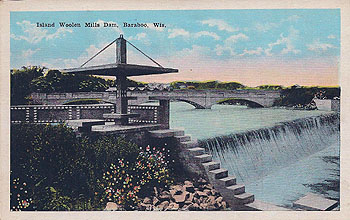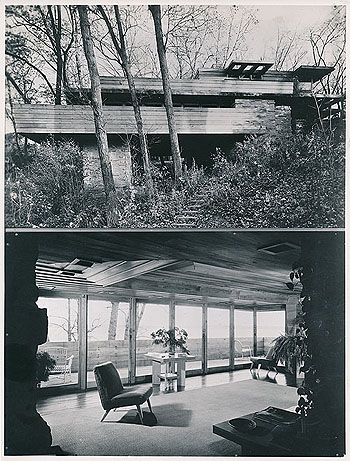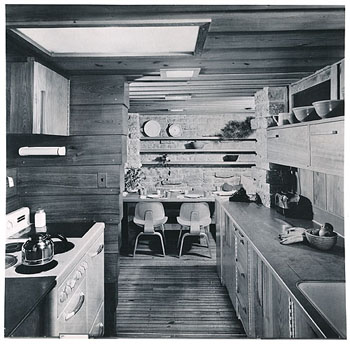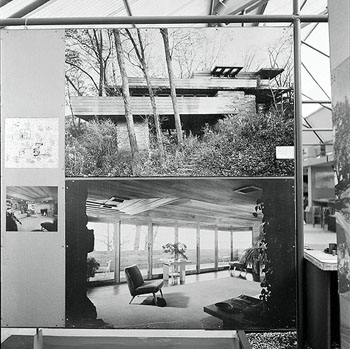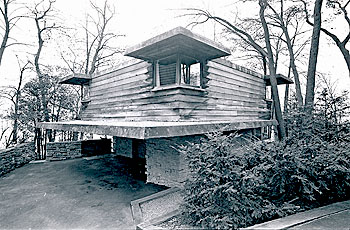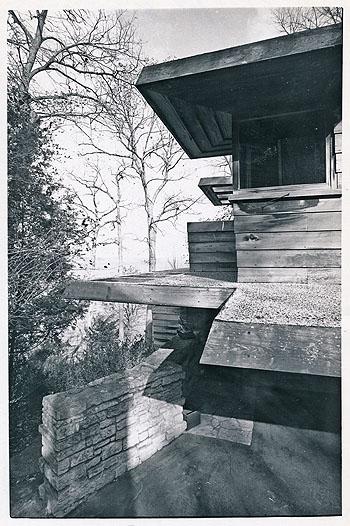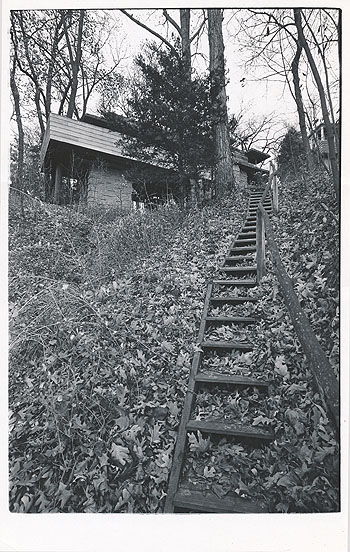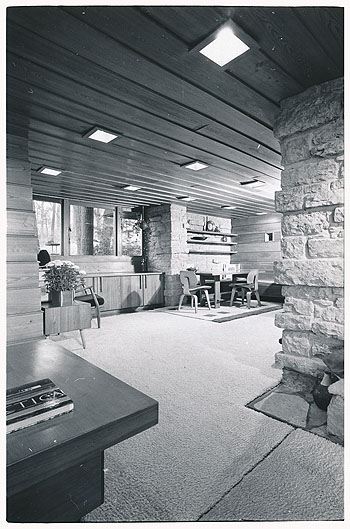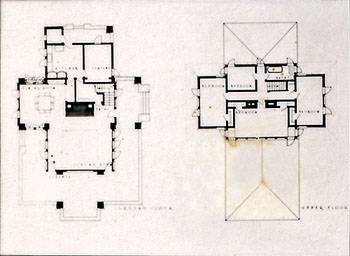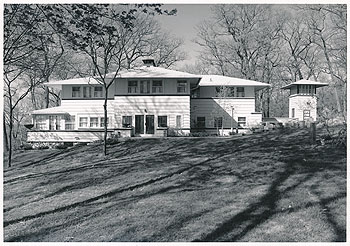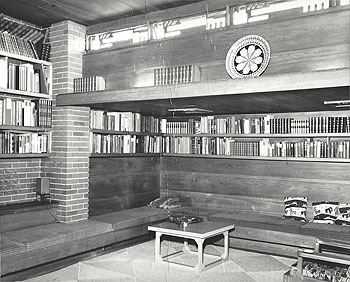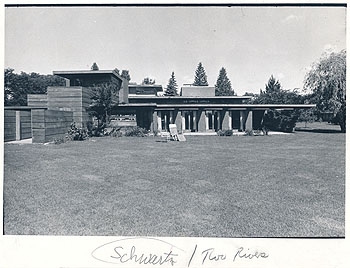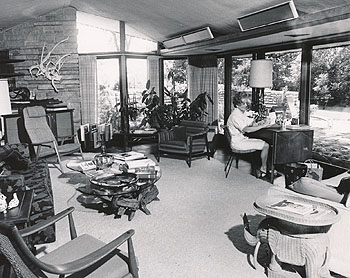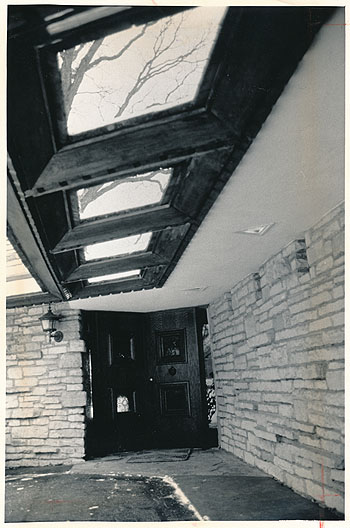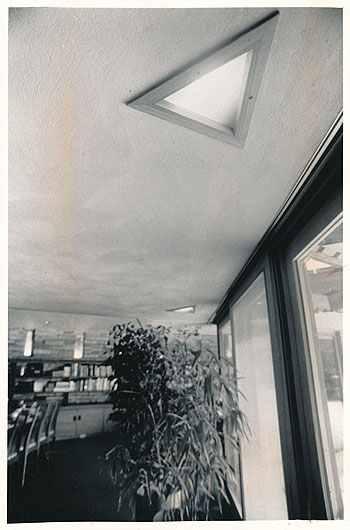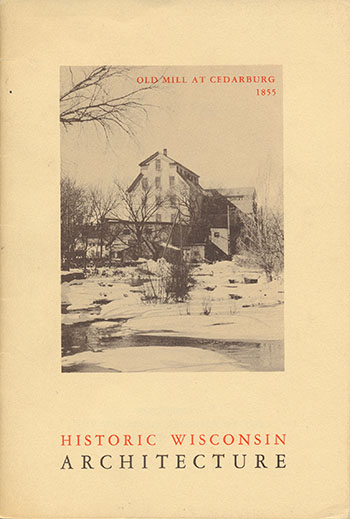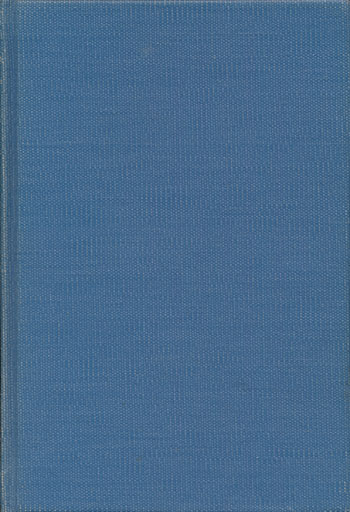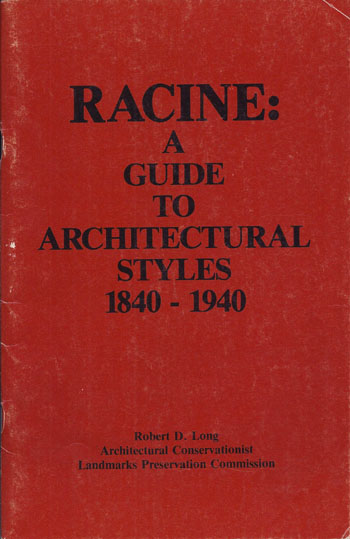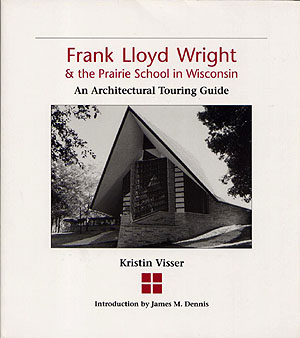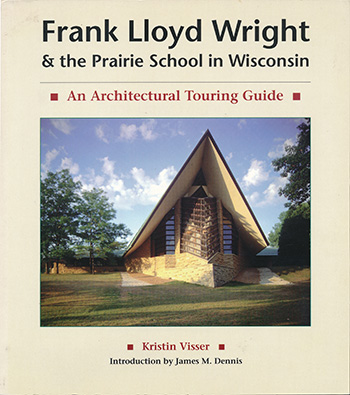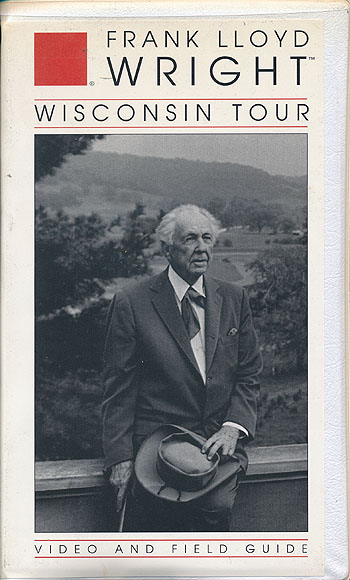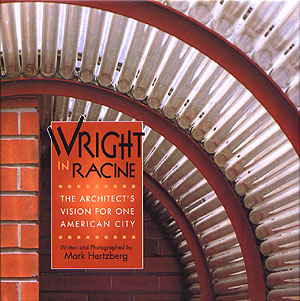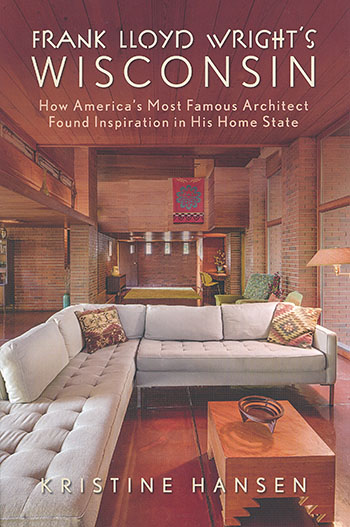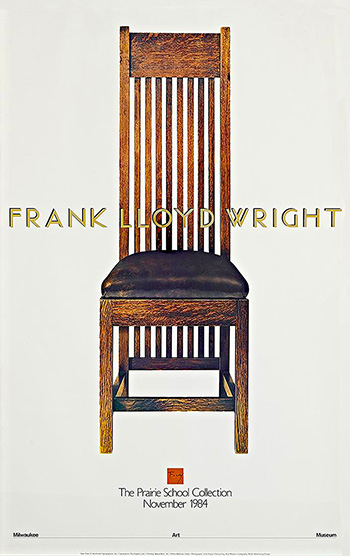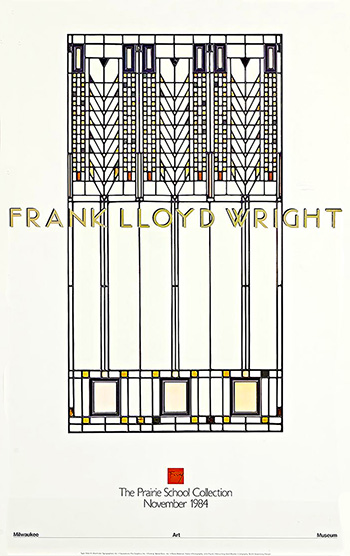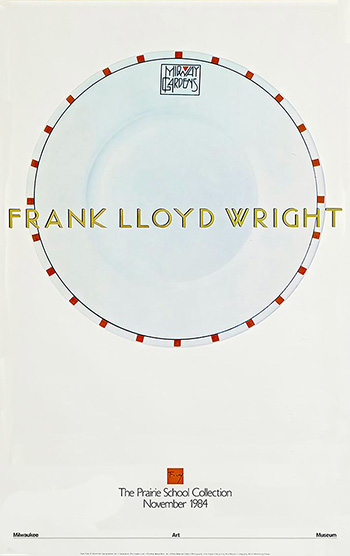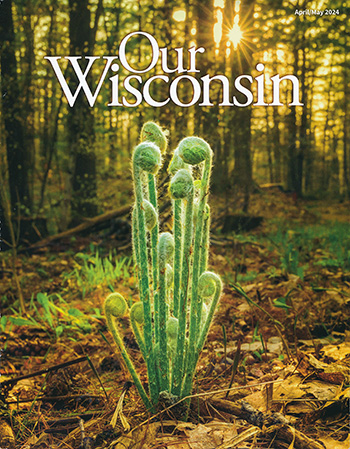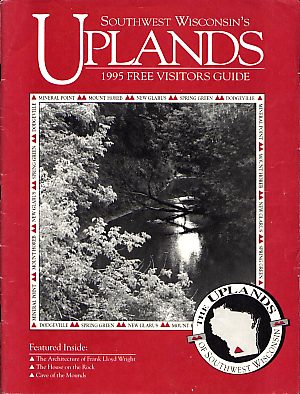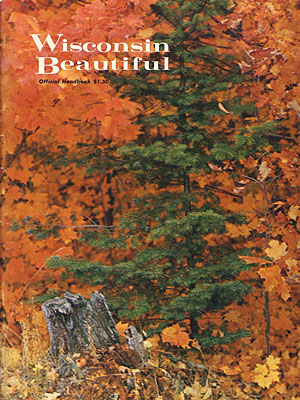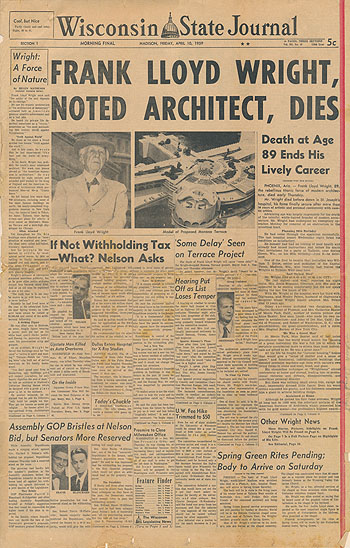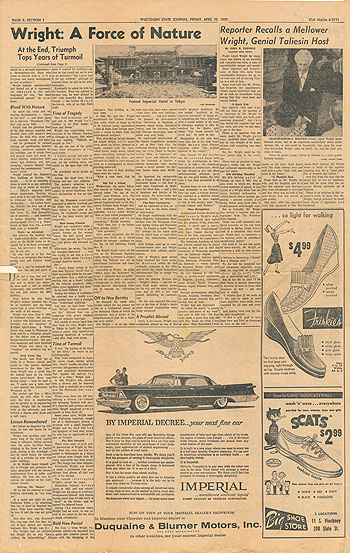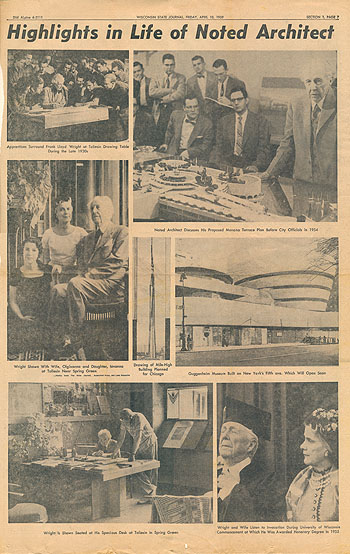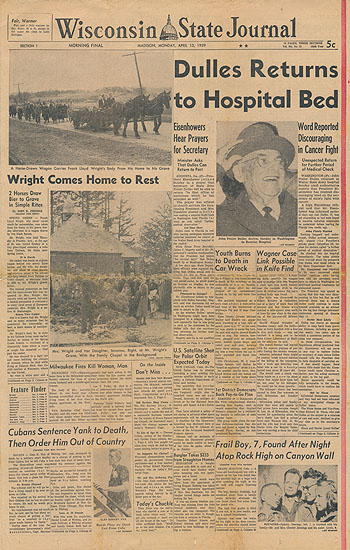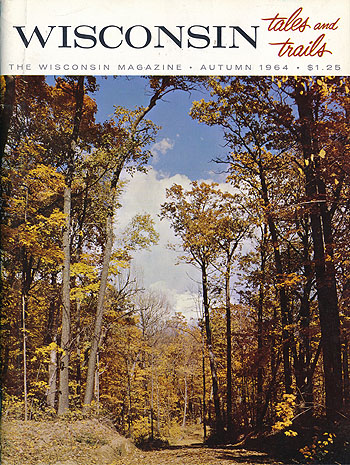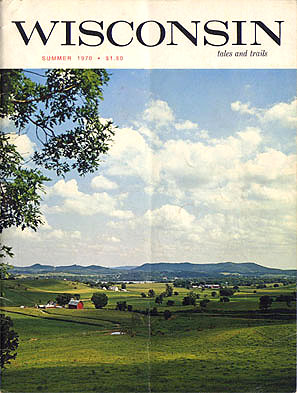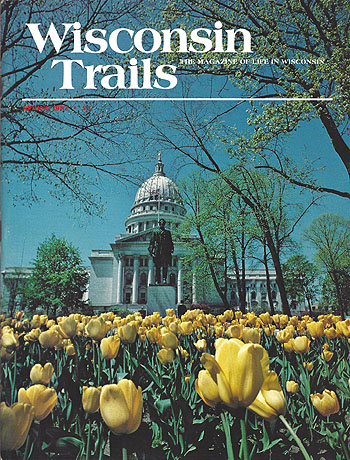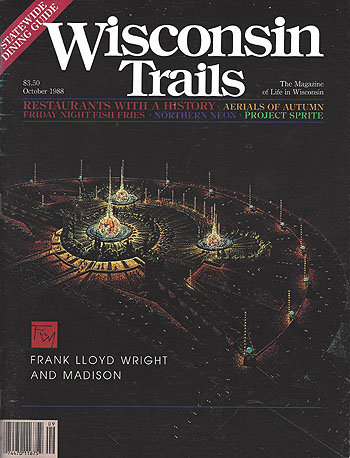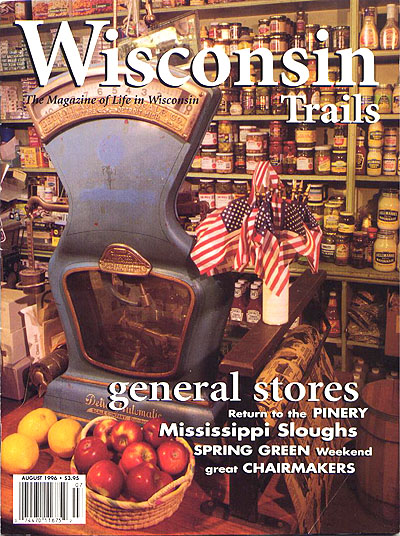
SUPPORT THE
WRIGHT LIBRARY
PROCEEDS FROM EVERY SALE GOES TO SUPPORT THE WRIGHT LIBRARY.
CLICK TO ORDER.
WE PROUDLY SUPPORT THE FRANK LLOYD WRIGHT FOUNDATION
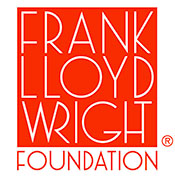
WE PROUDLY SUPPORT THE FRANK LLOYD WRIGHT BUILDING CONSERVANCY
WE PROUDLY SUPPORT FALLINGWATER
AND THE WESTERN PENNSYLVANIA CONSERVANCY

WISCONSIN
ADELMAN ANNUNCIATION CHURCH ARNOLD BOGK GERMAN WAREHOUSE GILMORE GREENBERG HARDY
HILLSIDE HOME SCHOOL HUNT IBER JACKSON JACOBS I JACOBS II AP JOHNSON HF JOHNSON KAREN JOHNSON
SC JOHNSON JONES (PENWERN) KINNEY LAKE DELAVAN YACHT CLUB LAKE GENEVA HOTEL LAMP COTTAGE LAMP
MANSON MIDWAY BARNS MITCHELL MOLLICA MONONA TERRACE MONONA TERRACE BLUEPRINTS MUNKWITZ APARTMENT
OBSERVATION PLATFORM PENWERN PETERSON PEW PORTER RICHARDS RICHARDS APARTMENT RICHARDS BUNGALOW
RIVERVIEW TERRACE ROCKY ROOST ROMEO AND JULIET ROSS RUDIN SMITH SPENCER SCHWARTZ TALIESIN I, II & III
UNITARIAN MEETING HOUSE UNITY CHAPEL VAN TEMELEN WALLIS WOMEN'S BUILDING WRIGHT (DUEY) WYOMING SCHOOLRACINE MADISON MILWAUKEE ART MUSEUM OUR WISCONSIN UPLANDS WISCONSIN BEAUTIFUL WISCONSIN NATURAL RESOURCES WISCONSIN STATE JOURNAL
WISCONSIN TALESOTHER HOMES
FREDERICK C. BOGK RESIDENCE (1916 - S.196) Date: 1967
Title: Frederick C. Bogk Residence, Milwaukee, Wisconsin 1967 (1916 - S.196).
Description: View of the the Northwest elevation of the Bogk Residence from the street. The driveway and entrance to the house is on the left side. The three sets of doors from the living room on the lower level open outward to the walled terrace. Bogk was a businessman and politician in Milwaukee, Wisconsin. He commissioned and Wright designed his home in 1916, which was completed in 1917. It is constructed of buff brick with cast concrete ornaments. Clipping pasted to verso: "Journal Photo by George Koshollek." Stamped on clipping: "Su Dec 10 1967." Hand written on verso: "Frank Lloyd Wright. F. C. Bogk House." Stamped on verso: "Dec 19 1967. Photographed by George Koshollek. Acquired from the archives of the Milwaukee Journal.
Size: Original 7 x 4 B&W photograph
S#: 1720.88.0122Date: 1967
Title: Frederick C. Bogk Residence 1967 (1916 - S.196).
Description: Detailed view of the cast concrete ornamental designs on the front elevation. Designed by Frank Lloyd Wright in 1916. It is constructed of buff brick with cast concrete. This design is repeated four times, just under the roof overhang. Hand written on verso: "Bogk / Elsner, Milwaukee. (Frank Lloyd Wright - Homes Designed By Him)." Stamped on verso: "Dec 19 1967.
Size: Original 7.75 x 5 B&W photograph.
S#: 1720.62.0820Date: 1967
Title: Frederick C. Bogk Residence, Milwaukee, Wisconsin 1967 (1916 - S.196).
Description: Window detail. These windows are on the front of the house, upper level. Frank Lloyd Wright designed the Bogk Residence in 1916. It is constructed of buff brick with cast concrete ornaments. The horizontal joints are racked, while the vertical joints are flush. Hand written on verso: "Bogk / Elsner, Milwaukee. (Frank Lloyd Wright - Homes Designed By Him)." Stamped on verso: "Dec 19 1967. Acquired from the archives of the Milwaukee Journal.
Size: Original 7.75 x 5 B&W photograph.
S#: 1720.73.0721Date: 1967
Title: Frederick C. Bogk Residence 1967 (1916 - S.196).
Description: View of the Southwest elevation, the right side of the house, from the Southwest. The Front of the house, facing the street is on the left. The entrance is on the opposite side of the house. The Living Room is on the left, the Dining Room is to the right, the Garage is on the far right. Frank Lloyd Wright designed the Bogk Residence in 1916. Hand written on verso: "Bogk / Elsner, Milwaukee. (Frank Lloyd Wright - Homes Designed By Him)." Stamped on verso: "Dec 19 1967.
Size: Original 7.75 x 5 B&W photograph.
S#: 1720.61.0820Date: 1967
Title: Frederick C. Bogk Residence, Milwaukee, Wisconsin Exterior 1967 (1916 - S.196).
Description: View of the Southwest elevation, the right side of the house, from the Southwest. The Front of the house, facing the street is to the left. The entrance is on the opposite side of the house. The Living Room is in the foreground, the Dining Room is in the background. Frank Lloyd Wright designed the Bogk Residence in 1916. Hand written on verso: "Bogk / Elsner, Milwaukee. (Frank Lloyd Wright - Homes Designed By Him)." Stamped on verso: "Dec 19 1967. Acquired from the archives of the Milwaukee Journal.
Size: Original 4.5 x 7.75 B&W photograph.
S#: 1720.75.0821Date: 1974
Title: Frederick C. Bogk Residence Exterior 1974 (1916 - S.196).
Description: View of the North elevation and entrance to the home. Frank Lloyd Wright designed the Bogk Residence in 1916. Constructed of buff brick with cast concrete ornaments. Stamped on verso: "File Nov 4 1974." Hand written on verso: "Bogk house at 2420 N. Terrace Ave. (Frank Lloyd Wright - Homes Designed By Him)."
Size: Original 7 x 9 B&W photograph.
S#: 1963.25.0319Date: 1974
Title: Frederick C. Bogk Residence Interior 1974 (1916 - S.196).
Description: View of the Living Room looking toward the front of the house. Frank Lloyd Wright designed the Bogk Residence in 1916. Three sets of doors open outward to an enclosed terrace. Hand written on verso: "Bogk home at 2420 N. Terrace Ave. (Frank Lloyd Wright - House Designed by Him.)" Stamped on verso: "File Nov 4 1974."
Size: Original 9 x 7 B&W photograph.
S#: 1963.35.0719Date: 1974
Title: Frederick C. Bogk Residence Interior 1974 (1916 - S.196).
Description: View of the Living Room with built-in seating/end-table/book shelf and fireplace. Frank Lloyd Wright designed the Bogk Residence in 1916. The built-in seating/end-table/book shelf was designed by Wright, and is consistent with other furniture designed for the home. The edge of the book shelf and end-table is edged with inset ebony. This design was repeated in other living and dining room furniture. The hassocks are Wright designed, and appear throughout the house, but appear to be a later addition and do not match the other furniture Wright designed for the Bogk House. See "Frank Lloyd Wright and George Mann Niedecken", 1999, p. 48-58. The hassocks are identical to the Frank Lloyd Wright "Four Square" Hassock designed for the Heritage Henredon Line of Fine Furniture in 1955 but never produced. Stamped on verso: "File Nov 4 1974." Hand written on verso: "Bogk house at 2420 N. Terrace Ave. (Frank Lloyd Wright - Homes Designed By Him)." See details of Bock furniture.
Size: Original 9 x 7 B&W photograph.
S#: 1963.24.0219Date: 1982
Title: Frederick C. Bogk Residence, Milwaukee, Wisc. 1982 (1916 - S.196).
Description: View from the Northwest. Bogk was a businessman and politician in Milwaukee, Wisconsin. He commissioned and Wright designed his home in 1916, which was completed in 1917. It is constructed of buff brick with cast concrete ornaments. The horizontal joints are racked, while the vertical joints are flush. Stamped on verso: "1982 May 17," and "George P Koshollek." Clipping pasted to verso: "The F. C. Bogk house, 2420 N. Terrace Ave., was built in 1916. - Journal Photo." Stamped on clipping: "May 30 1982." Hand written on verso: "(Frank Lloyd Wright - House Designed by Him.)" Photographed by George P. Koshollek. Acquired from the archives of the Milwaukee Journal.
Size: Original 10 x 7.5 B&W photograph.
ST#: 1982.60.0619Date: 1983
Title: Frederick C. Bogk Residence Interior 1983 (1916 - S.196).
Description: View of the Living Room looking toward the front of the house. Frank Lloyd Wright designed the Bogk Residence in 1916. Clipping pasted to verso: "Persimmon-colored velvet draperies shield the living room of the F.C. Bogk house from sunlight coming from Terrace Ave. The draperies and carpeting are replacements of the fragile originals. They were done in consultation with the Wright Fellowship in Spring Green." Hand written on verso: "(Frank Lloyd Wright - House Designed by Him.)" Stamped on verso: "Jan 5 1983." Also stamped on verso: "Sherman - Gessert" and "Staff Photo."
Size: Original 10 x 7.5 B&W photograph.
S#: 1983.47.0219Date: 1990
Title: Frederick C. Bogk Residence Exterior Circa 1990 (1916 - S.196).
Description: Bogk was a businessman and politician in Milwaukee, Wisconsin. He commissioned and Wright designed his home in 1916, which was completed in 1917. View of the Northeast elevation. The house is constructed of tan brick with precast concrete trim. The horizontal joints are racked, while the vertical joints are flush. The Living Room doors on the first level lead to and enclosed Terrace. Bedrooms are on the second level. Label on sleeve: "Wright, Frank Lloyd (1867-1959). FC Bogk House, Milwaukie (sic), WI, 1916. View from Street. Am. Arch."
Size: Original glass 35mm color slide and 10 x 8 high res digital image.
ST#: 1990.141.0618 (A)Date: 1990
Title: Frederick C. Bogk Residence Interior Circa 1990 (1916 - S.196).
Description: Bogk was a businessman and politician in Milwaukee, Wisconsin. He commissioned and Wright designed his home in 1916, which was completed in 1917. View from the Living Room toward the Dining Room. Of note are the Heritage Henredon furniture in the Living Room. Two chairs and a triangle coffee table on the left, couch with large coffee table and smaller rectangular tables tucked under larger table. Label on sleeve: "Wright, Frank Lloyd (1867-1959). FC Bogk House, Milwaukie (sic), WI, 1916. View into dining room from Living Room. Am. Arch."
Size: Original glass 35mm color slide and 10 x 8 high res digital image.
ST#: 1990.141.0618 (B)A. D. GERMAN WAREHOUSE (1915 - S.183) Date: 1915
Title: A. D. German Warehouse, Richland Center, Wisconsin, Photograph of Perspective Drawing 1915 (1915 - S.183).
Description: Frank Lloyd Wright's perspective drawing of the A. D. German Warehouse gives a clear impression as to Wright's original intent for the building's design. With the added details, never completed: Corner flag poles with hanging light fixtures; Additional concrete lintel, faced with abstract patterns above the projecting roof over the clerestory windows that ran above the entrance; A single entrance with decorative concrete columns; And horizontal sash bars on either end of the plate glass windows. In total, these details complete the design which always appeared as incomplete.
Size: 9.5 x 8 Color photograph.
S#: 0128.48.1216Date: Circa 1915 Title: Portrait of Albert Delvino German, circa 1915.
Description: Born December 18, 1875. Frank Lloyd Wright client. Photographed by Hillman, Richland Center, Wisconsin. Courtesy of the AD German Warehouse Conservancy.
Size: 8 x 10 B&W photograph.
S#: 0128.21.0316
Date: Circa 1922
Title: A. D. German Warehouse, Richland Center, Wisconsin, Circa 1922 (1915 - S.183).
Description: Designed by Frank Lloyd Wright in 1915 as a Brick and concrete building, it was capped by a pattered block on the fourth floor. Construction on the warehouse began in 1917, but was halted in 1921 when costs surpassed $125,000, on an estimated building cost of $30,000. The entrance and windows are boarded up. Although the building was never completed as Wright had fully designed it, and it is shown boarded up, he still chose to include it in the Wendingen Series, published in 1925. To the far right is German's original, two-story warehouse. Text on face of building reads "Wholesale Floor and Sugar." Copy photograph of the image published in "The Life-Work of the American Architect Frank Lloyd Wright," Wendingen, 1925.
Size: 10 x 8 B&W photograph.
S#: 0147.10.0117Date: Circa 1940 Title: A. D. German Warehouse, Richland Center, Wisconsin, Circa 1940 (1915 - S.183).
Description: Designed by Frank Lloyd Wright in 1915 as a brick and concrete building, it was capped by a pattered block on the fourth floor. Albert Delvino German was a successful commodity wholesaler. But as costs escalated, construction was halted in 1921. German lost the building in 1932 due to unpaid taxes and bankruptcy, purchased it back in 1935, but lost it again in 1937. Published in In The Nature of Materials, Hitchcock, 1942, plate 203, caption: "Finer than the patterned blocks of the Midway Gardens are those of this Warehouse. They face the top storey which was for cold storage." Photographed by Gilman Lane. Note the two horse draw plows, lower left. There is a sign by the front door: "Richland Fruit Co. Office."
Size: Original 10 x 8 B&W photograph.
S#: 0531.57.0216
Date: Circa 1940
Title: A. D. German Warehouse, Richland Center, Wisconsin, Circa 1940 (1915 - S.183).
Description: Pedro Guerrero spent a year with Frank Lloyd Wright and the Taliesin Fellowship from May 1940 to May 1941, and the summer of 1940 at Taliesin. According to Picturing Wright, he visited Taliesin Spring Green again in 1947-48 and 1952-53. Judging from vehicle in the bottom left corner it would appear that image was photographed in 1940. An old-styled street lamp is visible on the far left, and a "Gas pump" is visible left of center in the foreground. Note the male peaking in the window of the warehouse. Photographed by Pedro Guerrero.
Size: 8 x 9.25 B&W photograph.
S#: 0531.66.0117Date: 1953
Title: A. D. German Warehouse, Richland Center, Wisconsin, 1953 (1915 - S.183).
Description: Viewed from the Northeast. The perspective drawing gives a clear impression as to Frank Lloyd Wright's original intent for the building's design. With the added details, never completed: Corner flag poles with hanging light fixtures; Additional concrete lintel, faced with abstract patterns above the projecting roof over the clerestory windows that ran above the entrance; A single entrance with decorative concrete columns; And horizontal sash bars on either end of the plate glass windows. In total, these missing details complete the design. Text on warehouse: "Stock Inc. Gro Warehouse." Hand written on slide: "L. 143. 9-53. Same as #1." Set of two 35mm color slides of the A. D. German Warehouse. Text on slide: "21. Made in U.S.A.." Text on verso: Red Border "Kodachrome Transparency."
Size: Original 35mm color slide, and 8 x 5.5 high res digital image.
S#: 0987.98.0418 -1Date: 1953
Title: A. D. German Warehouse, Richland Center, Wisconsin, 1953 (1915 - S.183).
Description: Designed as a brick and concrete building, it was capped by a pattered block on the fourth floor. Forms were set and concrete poured in place. Hitchcock wrote, "Finer than the patterned blocks of the Midway Gardens are those of this Warehouse." In The Nature of Materials, 1942. The concrete frieze on the fourth floor is geometric in form. The design is interrupted by thin slits inserted with glass creating thin horizontal windows. The concrete projections were designed for flag poles, with a light fixture hanging below the lower projection. Hand written on slide: "L. 142. 9-53. Warehouse by FLW, Wisconsin." Set of two 35mm color slides of the A. D. German Warehouse. Text on slide: "22. Made in U.S.A.." Text on verso: Red Border "Kodachrome Transparency."
Size: Original 35mm color slide, and 8 x 5.5 high res digital image.
S#: 0987.98.0418 -2Date: C 1960
Title: A. D. German Warehouse, Richland Center, Wisconsin, Circa 1960 (Not Dated) (1915 - S.183).
Description: Viewed from the Southeast. Designed by Frank Lloyd Wright in 1915. Text on the front of the building: “Stock and Gro Warehouse.” A sign to the right of the lettering reads “For Sale or Lease.” Text on sleeve: “Mod: Arch: AM: Wright FL: Richland Center, Wis: Bus: A.D. German Warehouse. Ext: 1915. Sandak AAAC 418/84. 002947. Holy Cross.” Acquired from the archives of The College of Holy Cross.
Size: Original 35mm Color slide, sandwiched between glass, plastic mount.
S#: 1458.137.1223Date: 1967
Title: A. D. German Warehouse, Richland Center, Wisconsin, 1967 (1915 - S.183).
Description: Viewed from the Southeast. Designed by Frank Lloyd Wright in 1915. Constructed of brick and concrete, it is capped by a pattered block on the fourth floor. Albert Delvino German was a successful commodity wholesaler. But as costs escalated, construction was halted in 1921. German lost the building in 1932 due to unpaid taxes and bankruptcy, purchased it back in 1935, but lost it again in 1937. Banner reads: "This Frank Lloyd Wright Designed Building under new ownership and management." Small sign on the door to the left: "Pine River Gun Club." Clipping pasted to verso: "At Richland Center, the A. D. German warehouse blends Japanese scale, Mayan ornament and Wright's principles." Stamped on clipping: "Su Dec 10 1967."
Size: Original 4 x 3.5 B&W photograph.
S#: 1720.58.0520Date: 1975
Title: Frank Lloyd Wright German Warehouse Tour, 1975 (1915 - S.183). (Published by the Citizens of Richland county.)
Description: "Frank Lloyd Wright German Warehouse Tour Born in 1867 in Richland Center, Frank Lloyd Wright returned in 1915 to design a 4-story brick and concrete warehouse for Mr. A.D. German. Building construction spanned 5 years, during which time the Imperial Hotel in Tokyo was completed. These two buildings constituted Mr. Wright's most important work during this period..." Tour - Sunday, August 3, 1975. Includes one illustration. Gift from Kathryn Smith.
Size: 8.5 x 11
Pages: Pp 1
S#: 1996.22.0616Date: 1975
Title: A. D. German Warehouse, Richland Center, Wisconsin, 1975 (1915 - S.183).
Description: Detail view of the A. D. German Warehouse Frieze. Designed by Frank Lloyd Wright in 1915 as a Brick and concrete building, it was capped by a pattered block on the fourth floor. As costs escalated, construction was halted in 1921. German lost the building in 1932 due to unpaid taxes and bankruptcy, purchased it back in 1935, but lost it again in 1937. Text hand written on verso: "5/21/75. Detail of Frieze. F.L.W. Warehouse, Richland Center. AD German Warehouse. (Frank Lloyd Wright - Buildings Designed By Him.)" Stamped on verso: "May 24 1975." Acquired from the archives of the Milwaukee Sentinel.
Size: Original 5 x 8 B&W photograph.
S#: 1996.63.1221Date: 1975
Title: A. D. German Warehouse, Richland Center, Wisconsin, 1975 (1915 - S.183).
Description: Drawing of the A. D. German Warehouse. Frank Lloyd Wright was born 26 miles from Taliesin, Spring Green, in Richland Center, Wisconsin, the location of the A. D. German Warehouse. Albert Delvino German was a successful commodity wholesaler. Designed by Wright in 1915 as a Brick and concrete building, it was capped by a pattered block on the fourth floor. As costs escalated, construction was halted in 1921. German lost the building in 1932 due to unpaid taxes and bankruptcy, purchased it back in 1935, but lost it again in 1937. Text on face: "Warehouse - Museum Elevation." Text hand written on verso: "Proposed new entrance - F.L.W. Warehouse, Richland Center. 5/21/75. (Frank Lloyd Wright - Buildings Designed By Him.)" Stamped on verso: "May 24 1975."
Size: Original 8 x 10 B&W photograph.
S#: 1996.46.1119Date: 1976
Title: Richland Center Bicentennial Souvenir Spoons 1976.
Description: Emblem has a profile of Frank Lloyd Wright. Richland Center, Wisconsin. Frank Lloyd Wright was born 26 miles from Taliesin, Spring Green, in Richland Center, Wisconsin, the location of the A. D. German Warehouse (1915 - S.183). Designed by Wright in 1915 as a brick and concrete building, it was capped by a pattered block on the fourth floor. These spoons commemorate the Bicentennial of the United States. Test on face: "Bicentennial 1976. Birth Place, Frank Lloyd Wright, Richland Center Wis." Text stamped on verso stem: "Corwill-Holland." Two sets, box and spoon.
Size: Spoon: Top Emblem: .75 x 1". Bowl: .8 x 1.4". Length: 4.6". Box" 5.5 x 1.5 x .5"
S#: 2020.39.1019, 2020.40.1018Date: 1984
Title: Frank Lloyd Wright's Warehouse in Richland Center, Wisconsin (Soft Cover, Spiral Bound) (Published by Richland County Publishers, Richland Center, Wisconsin)
Author: Scott, Margaret
Description: "The book is not written for the locality alone but for the public in general in an effort to add whatever the local people may contribute to Wrightian memorabilia. Numerous persons in the area were interviewed by Bruce Barrett, a former apprentice at the Taliesin Fellowship and at present a volunteer at the Warehouse at this time when it is being made a new source of cultural and historical concern. The book is not a resume of the thesis by Randolph Henning who approached its past and possible future from the standpoint of an architect..." p. ix. Original list price $8.00. (First Edition)
Size: 8 x 8
Pages: Pp 230
ST#: 1984.49.1216Date: 2013 Title: The A. D. German Warehouse: Frank Lloyd Wright's Design Process (Published in the Proceedings of the 2013 ARCC Spring Research Conference, Architectural Research Centers Consortium, University of North Carolina, Charlotte)
Author: Tucker, Lisa M.
Description: "Abstract: This research discusses a long- overlooked building designed by Frank Lloyd Wright. The focus is on the project as a case study exemplifying Wright's design process. Although Wright's work is often described as appearing fully-conceived and then drawn in a single sitting onto the paper, the archival documents, correspondence and actual physical building of the A.D. German Warehouse tell a different story. The A.D. German Warehouse was designed ca. 1914 for Richland Center, Wisconsin, and was to be the only building Wright ever designed for the town of his birth. Built for businessman Albert Dell German of Richland Center, the warehouse is also Wright's only warehouse among his many projects..." Pages 255-263. Includes five illustrations.
Size: 8.5 x 11
Pages: Pp 9
ST#: 2013.13.0316
Date: 2016
Title: A. D. German Warehouse 2016 (1915 - S.183).
Description: Frank Lloyd Wright was born 26 miles from Taliesin, Spring Green, in Richland Center, Wisconsin, the location of the A. D. German Warehouse. Designed by Wright in 1915 as a Brick and concrete building, it was capped by a pattered block on the fourth floor. In June, 2016, on a road trip from Philadelphia to Seattle with my son-in-law, We stopped in Oak Park to tour Wright's Home and Studio. We took an hour to photograph the outside, and unable to obtain tickets to tour the inside, we called Taliesin and reserved tickets to tour Wright's personal residence. We headed to Taliesin, Spring Green, arriving with 10 minutes to spare before the tour began. My excitement mounted. It had been 43 years since I had last visited Taliesin. After spending a few hours, immersing ourselves in every detail, overwhelmed at Wright's genius, we hit the road. Low and behold we found... Continue...
Size: 20 x 14 high res digital color photograph.
ST#: 2016.06.1206 (1-24)
A. D. GERMAN WAREHOUSE 2016
A. D. German Warehouse 2016 (1915 - S.183). Frank Lloyd Wright was born 26 miles from Taliesin, Spring Green, in Richland Center, Wisconsin, the location of the A. D. German Warehouse. Designed by Wright in 1915 as a brick and concrete building, it was capped by a pattered block on the fourth floor.
In June, 2016, on a road trip from Philadelphia to Seattle with my son-in-law, We stopped in Oak Park to tour Wright's Home and Studio. We took an hour to photograph the outside, and unable to obtain tickets to tour the inside, we called Taliesin and reserved tickets to tour Wright's personal residence. We headed to Taliesin, Spring Green, arriving with 10 minutes to spare before the tour began. My excitement mounted. It had been 43 years since I had last visited Taliesin. After spending a few hours, immersing ourselves in every detail, overwhelmed at Wright's genius, we hit the road. Low and behold we found ourselves in Richland Center, Wright's birthplace.
Albert Delvino German was a successful commodity wholesaler. While married to his first wife Grace, Albert purchased the Mitchell Hotel, located on the corner of Haseltine and Church Street. He renamed it the Hotel Badger. After his first wife died in 1909, he remarried in 1912 and also built his first warehouse, adjacent to the hotel on Haseltine Street. It still exists today, just west of the Wright Warehouse. His business was very successful and he opened up two additional warehouses in Platteville and Prairie du Chien. In 1915, Wright designed a four story warehouse to store wholesale goods, a small tea house restaurant, specialized retail shops, a wholesale outlet store, a gallery for local artists and even space for a Wright exhibit. Advanced thinking for 1915. The original perspective, published in Wendingen, 1925, was designed as a rectangular building, but the working drawings show an additional two story Studio Annex on the South elevation. The perspective drawing gives a clear impression as to Wright's original intent for the building's design. With the added details,never completed: Corner flag poles with hanging light fixtures; Additional concrete lintel, faced with abstract patterns above the projecting roof over the clerestory windows that ran above the entrance; A single entrance with decorative concrete columns; And horizontal sash bars on either end of the plate glass windows. In total, these details complete the design which always appeared as incomplete. Even the addition of the Studio Annex seems to throw off the balance of the design. While initial designs indicate a rectangular block, the working drawings add the Studio Annex to the South Elevation. Small in size, and with it's own entrance, Wright added many additional window to the Annex.
The Hotel Badger was demolished, and construction on the warehouse began in 1917, but was halted in 1921 when costs surpassed $125,000, on an estimated building cost of $30,000. German was able to utilize the building to warehouse wholesale goods -- flour, sugar, groceries, feed and grain, coal and cement, etc, but other plans like the tea house and galleries never came to fruition. He lost the building in 1932 due to unpaid taxes and bankruptcy, but was able to purchased it back in 1935.
It appears that German never blamed Wright for the cost over-runs, because in 1935, he hired Wright again to design extensive changes and alterations to the building, converting the ground floor to a cafe and restaurants, adding eight apartments to the fourth floor, and an apartment for himself in the unfinished annex. But sadly, those changes were never made. German lost it again in 1937, and the building was sold for $9,000. Hitchcock wrote, "Finer than the patterned blocks of the Midway Gardens are those of this Warehouse. They face the top storey which was for cold storage." In The Nature of Materials, 1942.
The following is a set of 24 photographs of the A. D. German Warehouse, by Douglas M. Steiner, June 10, 2016. Text and photographs by Douglas M. Steiner, Copyright 2016.
1) A. D. German Warehouse 2016 (1915 - S.183). Viewed from the South. Designed by Wright in 1915 as a brick and concrete building, it was capped by a pattered block on the fourth floor. Photographed on June 10, 2016 by Douglas M. Steiner. 20 x 14 high res digital color photograph. (ST#2016.06-1) 2) A. D. German Warehouse 2016 (1915 - S.183). Viewed from the South. Designed as a brick and concrete building, it was capped by a pattered block on the fourth floor. Forms were set and concrete poured in place. Photographed on June 10, 2016 by Douglas M. Steiner. 20 x 14 high res digital color photograph. (ST#2016.06-2) 2B) Detail of the pattered block on the fourth floor. Forms were set and concrete poured in place. 3) A. D. German Warehouse 2016 (1915 - S.183). Viewed from the South. Not shown in the original perspective, the Studio Annex in the foreground was added, with its own entrance. Photographed on June 10, 2016 by Douglas M. Steiner. 20 x 14 high res digital color photograph. (ST#2016.06-3) 4A) A. D. German Warehouse 2016 (1915 - S.183). Viewed from the Southeast. Small in size, and with it's own entrance, Wright added many additional window to the Annex. Like the main entrance, Wright dropped the window lintel, intersecting the glass, creating clerestory windows. Photographed on June 10, 2016 by Douglas M. Steiner. 20 x 14 high res digital color photograph. (ST#2016.06-4) 4B) A. D. German Warehouse 2016 (1915 - S.183). Viewed from the Southeast. Hitchcock wrote, "Finer than the patterned blocks of the Midway Gardens are those of this Warehouse." In The Nature of Materials, 1942. Photographed on June 10, 2016 by Douglas M. Steiner. (ST#2016.06-4) 5) A. D. German Warehouse 2016 (1915 - S.183). Viewed from the South. One of the commodities that German sold was concrete. Designed as a brick and concrete building, it was capped by a pattered block on the fourth floor. Photographed on June 10, 2016 by Douglas M. Steiner. 20 x 14 high res digital color photograph. (ST#2016.06-5) 6) A. D. German Warehouse 2016 (1915 - S.183). Viewed from the Southeast. Small in size, and with it's own entrance, Wright added many additional window to the Annex. Like the main entrance, Wright dropped the window lintel, intersecting the glass, creating clerestory windows above. Photographed on June 10, 2016 by Douglas M. Steiner. 20 x 14 high res digital color photograph. (ST#2016.06-6) 7) A. D. German Warehouse 2016 (1915 - S.183). Viewed from the Southeast. The concrete frieze on the fourth floor is geometric in form. The design is interrupted by thin slits inserted with glass creating thin horizontal windows. Photographed on June 10, 2016 by Douglas M. Steiner. 20 x 14 high res digital color photograph. (ST#2016.06-7) 7B) Detail of the decorative concrete frieze. Wright dropped the window lintel, intersecting the glass, creating clerestory windows in the Annex. 7C) Detail of the decorative concrete frieze. The concrete projections were designed for flag poles, with a light fixture hanging below the first projection. 7D) Detail of the decorative concrete frieze. 8) A. D. German Warehouse 2016 (1915 - S.183). Viewed from the Southeast. The perspective drawing gives a clear impression as to Wright's original intent for the building's design. With the added details, never completed: Corner flag poles with hanging light fixtures; Additional concrete lintel, faced with abstract patterns above the projecting roof over the clerestory windows that ran above the entrance; A single entrance with decorative concrete columns; And horizontal sash bars on either end of the plate glass windows. In total, these details complete the design which always gave the impression that the building appeared incomplete. Photographed on June 10, 2016 by Douglas M. Steiner. 20 x 14 high res digital color photograph. (ST#2016.06-8) 8B) Detail of the fourth floor's concrete frieze. 9) A. D. German Warehouse 2016 (1915 - S.183). Detail of a built-in planter. Although Wright added many built-in planters, it does not appear to be part of the original design. Photographed on June 10, 2016 by Douglas M. Steiner. 20 x 14 high res digital color photograph. (ST#2016.06-9) 10) A. D. German Warehouse 2016 (1915 - S.183). According to the original plans, there were eight freestanding concrete pillars on each floor, with another sixteen embedded in the walls. They rose from floor to floor, and were 16 feet center to center. Photographed on June 10, 2016 by Douglas M. Steiner. 20 x 14 high res digital color photograph. (ST#2016.06-10) 11) A. D. German Warehouse 2016 (1915 - S.183). Detail of the concrete pillar capitals. Photographed on June 10, 2016 by Douglas M. Steiner. 20 x 14 high res digital color photograph. (ST#2016.06-11) 12) A. D. German Warehouse 2016 (1915 - S.183). Viewed from the Northeast. The perspective drawing gives a clear impression as to Wright's original intent for the building's design. With the added details, never completed: Corner flag poles with hanging light fixtures; Additional concrete lintel, faced with abstract patterns above the projecting roof over the clerestory windows that ran above the entrance; A single entrance with decorative concrete columns; And horizontal sash bars on either end of the plate glass windows. In total, these details complete the design which always gave the impression that the building appeared incomplete. Photographed on June 10, 2016 by Douglas M. Steiner. 20 x 14 high res digital color photograph. (ST#2016.06-12) 12B) Detail of the fourth floor's concrete frieze. 13) A. D. German Warehouse 2016 (1915 - S.183). Plaque on the Northeast corner of the German Warehouse. "A.D. German Warehouse. Frank Lloyd Wright - Architect, Has been placed in the National Register of Historic Places. By the United States department of The Interior, 1974." Photographed on June 10, 2016 by Douglas M. Steiner. 20 x 14 high res digital color photograph. (ST#2016.06-13) 14) A. D. German Warehouse 2016 (1915 - S.183). Viewed from the North. Frank Lloyd Wright rests the full weight of the front of the building on four pillars. Photographed on June 10, 2016 by Douglas M. Steiner. 20 x 14 high res digital color photograph. (ST#2016.06-14) 15) A. D. German Warehouse 2016 (1915 - S.183). Viewed from the North. Wright dropped the window lintel, intersecting the glass, creating clerestory windows. Wright's designed the four story warehouse to store wholesale goods, a small tea house restaurant, specialized retail shops, a wholesale outlet store, a gallery for local artists and even space for a Wright exhibit. Advanced thinking for 1915. Photographed on June 10, 2016 by Douglas M. Steiner. 20 x 14 high res digital color photograph. (ST#2016.06-15) 15B) Detail of the concrete pillar capitals. 16) A. D. German Warehouse 2016 (1915 - S.183). "Office." Not originally an entrance, this one on the Northeast corner was cut into the brick and added by the time Gilman Lane photographed the building around 1940. Photographed on June 10, 2016 by Douglas M. Steiner. 20 x 14 high res digital color photograph. (ST#2016.06-16) 17) A. D. German Warehouse 2016 (1915 - S.183). View of the North elevation from the North. Photographed on June 10, 2016 by Douglas M. Steiner. 20 x 14 high res digital color photograph. (ST#2016.06-17) 18) A. D. German Warehouse 2016 (1915 - S.183). Detail of the brick and concrete. Photographed on June 10, 2016 by Douglas M. Steiner. 20 x 14 high res digital color photograph. (ST#2016.06-18) 19) A. D. German Warehouse 2016 (1915 - S.183). Because the majority usage for the building was storage, Wright designed the building with a minimal amount of windows on the second to the fourth floors. Photographed on June 10, 2016 by Douglas M. Steiner. 20 x 14 high res digital color photograph. (ST#2016.06-19) 19B) Detail of the fourth floor's concrete frieze. 20) A. D. German Warehouse 2016 (1915 - S.183). Viewed from the North. The concrete projections were designed for flag poles, with a light fixture hanging below the first projection. The back entrance with stairs was added at a later date, as was the cover between the first warehouse (right) and the second (left). Photographed on June 10, 2016 by Douglas M. Steiner. 20 x 14 high res digital color photograph. (ST#2016.06-20) 21) A. D. German Warehouse 2016 (1915 - S.183). Viewed from the Northwest. The back entrance with stairs was added at a later date, as was the cover between the first warehouse (right) and the second (left). Photographed on June 10, 2016 by Douglas M. Steiner. 20 x 14 high res digital color photograph. (ST#2016.06-21) 22) A. D. German Warehouse 2016 (1915 - S.183). View of the Northwest concrete frieze on the Northwest corner. Photographed on June 10, 2016 by Douglas M. Steiner. 20 x 14 high res digital color photograph. (ST#2016.06-22) 22B) Detail of the fourth floor's concrete frieze. 23) A. D. German Warehouse 2016 (1915 - S.183). View of the North elevation from the Northwest. Photographed on June 10, 2016 by Douglas M. Steiner. 20 x 14 high res digital color photograph. (ST#2016.06-23) 24) A. D. German Warehouse 2016 (1915 - S.183). View of the Northwest coner. Photographed on June 10, 2016 by Douglas M. Steiner. 20 x 14 high res digital color photograph. (ST#2016.06-24) 24B) Detail of the concrete projection designed for holding a flag pole and light fixture hanging below the first projection GREENBERG RESIDENCE, DOUSMAN, WISCONSIN (1954 - S.372) Date: Circa 1965
Title: 1) Dr. Maurice & Margaret Greenberg Residence, Dousman, Wisc., Exterior Circa 1965 (1954 - S.372).
Description: View looking up from the North. Constructed of brick, concrete and wood. A concrete balcony is cantilevered on three sides. The boulder is to the right. Designed by Frank Lloyd Wright in 1954. Text on sleeve: "Wright, F. L. - Greenberg House, 4-1. Greenberg House. Ext., distant view. Dousman, Wis, 1954. Wright, Frank Lloyd. U of Virginia FAIC." Acquired from the archives of the University of Virginia. 35mm Color slide, sandwiched between glass, plastic mount.
Size: 35mm Color slide, sandwiched between glass, plastic mount.
S#: 1628.73.0520Date: Circa 1965
Title: 2) Dr. Maurice & Margaret Greenberg Residence, Dousman, Wisc., Exterior Circa 1965 (1954 - S.372).
Description: View looking up from the West. Constructed of brick, concrete and wood. A concrete balcony is cantilevered on three sides. The boulder is to the right. Designed by Frank Lloyd Wright in 1954. Text on sleeve: "Wright, F. L. - Greenberg House, 4-2. Greenberg House. Ext., distant view. Dousman, Wis, 1954. Wright, Frank Lloyd. U of Virginia FAIC." Acquired from the archives of the University of Virginia.
Size: 35mm Color slide, sandwiched between glass, plastic mount.
S#: 1628.74.0520Date: Circa 1965
Title: 3) Dr. Maurice & Margaret Greenberg Residence, Dousman, Wisc., Exterior Circa 1965 (1954 - S.372).
Description: View from the East looking toward the balcony. The Workshop is on the immediate left. Constructed of brick, concrete and wood. A concrete balcony is cantilevered on three sides. Designed by Frank Lloyd Wright in 1954. Text on sleeve: "Wright, F. L. - Greenberg House, 4-3. Greenberg House. Ext., view of terrace. Dousman, Wis, 1954. Wright, Frank Lloyd. U of Virginia FAIC." Acquired from the archives of the University of Virginia.
Size: 35mm Color slide, sandwiched between glass, plastic mount.
S#: 1628.75.0520Date: Circa 1965
Title: 4) Dr. Maurice & Margaret Greenberg Residence, Dousman, Wisc., Exterior Circa 1965 (1954 - S.372).
Description: View from the East looking at the Northwest corner of the Living Room. The corner is a mitered glass window. Constructed of brick, concrete and wood. A concrete balcony is cantilevered on three sides. Designed by Frank Lloyd Wright in 1954. Text on sleeve: "Wright, F. L. - Greenberg House, 4-4. Greenberg House. Ext., view of terrace. Dousman, Wis, 1954. Wright, Frank Lloyd. U of Virginia FAIC." Acquired from the archives of the University of Virginia.
Size: 35mm Color slide, sandwiched between glass, plastic mount.
S#: 1628.76.0520Date: Circa 1965
Title: 5) Dr. Maurice & Margaret Greenberg Residence, Dousman, Wisc., Exterior Circa 1965 (1954 - S.372).
Description: View from the Northeast. Constructed of brick, concrete and wood. A concrete balcony is cantilevered on three sides. Designed by Frank Lloyd Wright in 1954. Text on sleeve: "Wright, F. L. - Greenberg House, 4-5. Greenberg House. Ext., detail of window. Dousman, Wis, 1954. Wright, Frank Lloyd. U of Virginia FAIC." Acquired from the archives of the University of Virginia.
Size: 35mm Color slide, sandwiched between glass, plastic mount.
S#: 1628.77.0520Date: Circa 1965
Title: 6) Dr. Maurice & Margaret Greenberg Residence, Dousman, Wisc., Exterior Circa 1965 (1954 - S.372).
Description: Detail of the perforated light screen, Southeast corner of the Workshop. Constructed of brick, concrete and wood. A concrete balcony is cantilevered on three sides. Designed by Frank Lloyd Wright in 1954. Text on sleeve: "Wright, F. L. - Greenberg House, 4-6. Greenberg House. Ext., detail of carport. Dousman, Wis, 1954. Wright, Frank Lloyd. U of Virginia FAIC." Acquired from the archives of the University of Virginia.
Size: 35mm Color slide, sandwiched between glass, plastic mount.
S#: 1628.78.0520Date: Circa 1965
Title: 7) Dr. Maurice & Margaret Greenberg Residence, Dousman, Wisc., Living Room Circa 1965 (1954 - S.372).
Description: View of the Living Room and fireplace from the Southwest. Constructed of brick, concrete and wood. A concrete balcony is cantilevered on three sides. Designed by Frank Lloyd Wright in 1954. Text on sleeve: "Wright, F. L. - Greenberg House, 5-1. Greenberg House. Int., living room. Dousman, Wis, 1954. Wright, Frank Lloyd. U of Virginia FAIC." Acquired from the archives of the University of Virginia.
Size: 35mm Color slide, sandwiched between glass, plastic mount.
S#: 1628.79.0520Date: 1967
Title: Dr. Maurice & Margaret Greenberg Residence, Dousman, Wisc., Exterior 1967 (1954 - S.372). .
Description: View from the East looking toward the balcony. Designed by Frank Lloyd Wright in 1954. Constructed of brick, concrete and wood. A concrete balcony is cantilevered on three sides. Clipping pasted to verso: "New angles are also apparent in Dr. Maurice Greenberg's home neat Dousman. Cantilevered near the top of a hill, the house was designed when Wright was 88 but still very prolific. "I just shake designs out of my sleeve," he told the Greenbergs." Hand written on verso: "Dec. 1 1967. Milwaukee Journal. Maurice Greenberg House. Frank Lloyd Wright." Acquired from the archives of the Milwaukee Journal Sentinel.
Size: Original 6 x 4.5 B&W photograph
S#: 1720.86.1221
THOMAS P. HARDY RESIDENCE, RACINE, WISCONSIN (1905 - S.115) Date: Circa 1935-1940
Title: Thomas P. Hardy Residence. Racine, Wisconsin Circa 1935-1940 (1905 - S.115).
Description: 1) Set of four photographs of the Hardy Residence held in the collection of the Oak Park Public Library. View of the Hardy Residence from the Northwest. Designed by Frank Lloyd Wright in 1905. This is the street view, and although it is the front of the house, Wright illustrated the back elevation, facing Lake Michigan, in Plate XV, Ausgefuhrte Bauten und Entwurfe von Frank Lloyd Wright. Published in In The Nature of Materials, Hitchcock, 1942, Plate 112. These photographs were produced in the late 1970s. Hand written on verso: "Hardy 69A." Photographed by Gilman Lane.
Size: Original 5 x 3.5 B&W photograph.
S#: 0397.66.0920 -1Date: Circa 1935-1940
Title: Thomas P. Hardy Residence. Racine, Wisconsin Circa 1935-1940 (1905 - S.115).
Description: 2) Set of four photographs of the Hardy Residence held in the collection of the Oak Park Public Library. View of the Hardy Residence from the West. Designed by Frank Lloyd Wright in 1905. This is the street view, and although it is the front of the house, Wright illustrated the back elevation, facing Lake Michigan, in Plate XV, Ausgefuhrte Bauten und Entwurfe von Frank Lloyd Wright. These photographs were produced in the late 1970s. Hand written on verso: "Hardy 69C." Photographed by Gilman Lane.
Size: Original 5 x 3.5 B&W photograph.
S#: 0397.66.0920 -2Date: Circa 1935-1940
Title: Thomas P. Hardy Residence. Racine, Wisconsin Circa 1935-1940 (1905 - S.115).
Description: 3) Set of four photographs of the Hardy Residence held in the collection of the Oak Park Public Library. View of the Hardy Residence from the Southwest. Designed by Frank Lloyd Wright in 1905. This is the street view, and although it is the front of the house, Wright illustrated the back elevation, facing Lake Michigan, in Plate XV, Ausgefuhrte Bauten und Entwurfe von Frank Lloyd Wright. The automobile on the the right is from the mid-thirties. These photographs were produced in the late 1970s. Hand written on verso: "Hardy 69D." Photographed by Gilman Lane.
Size: Original 5 x 3.5 B&W photograph.
S#: 0397.66.0920 -3Date: Circa 1935-1940
Title: Thomas P. Hardy Residence. Racine, Wisconsin Circa 1935-1940 (1905 - S.115).
Description: 4) Set of four photographs of the Hardy Residence held in the collection of the Oak Park Public Library. View of the Hardy Residence from the South. Designed by Frank Lloyd Wright in 1905. This is the street view, and although it is the front of the house, Wright illustrated the back elevation, facing Lake Michigan, in Plate XV, Ausgefuhrte Bauten und Entwurfe von Frank Lloyd Wright. These photographs were produced in the late 1970s. Hand written on verso: "Hardy 69B." Photographed by Gilman Lane.
Size: Original 5 x 3.5 B&W photograph.
S#: 0397.66.0920 -4Date: 1982
Title: Thomas P. Hardy Residence 1982 (1905 - S.115).
Description: Street view of the Hardy Residence from the Northwest. Hand written on verso: "Frank Lloyd Wright Buildings." Caption pasted to verso: "Frank Lloyd Wright: Thomas Hardy House, Racine, Wisconsin, 1905." Stamped on verso: "Feb 23 1982." Label pasted to verso: "Minnesota Museum of Art, St. Peter At Kellogg, St. Paul, MN 55102." Acquired from the Minnesota Museum of Art archive department.
Size: Original 10 x 8 B&W photograph.
ST#: 1982.59.0918Date: 2006 Title: Frank Lloyd Wright's Hardy House (Hard Cover DJ) (Published by Pomegranate Communications, Inc., Petaluma, CA)
Author: Hertzberg, Mark; Introduction by Levine, Neil
Description: The Thomas P. Harding Residence, Racine, Wisconsin (1905 - S.115). Author and photographer Mark Hertzberg's extensive research has uncovered previously, unpublished plans and drawings for Wright's original (and unbuilt) conception of the house, along with vast amounts of correspondence between Hardy and Wright. He has documented the house in all seasons and from many different perspectives, inside and out. His virtual tour includes interviews with various people who have lived in the house or had firsthand knowledge of its history--from Hardy's grandchildren to the present owners. The result is an intricate story of an architectural marvel interlaced with remembrances by its residents. (Publisher's description.) Original list price $19.95. (First Edition)
Size: 7.25 x 7.25
Pages: Pp 80
ST#: 2006.42.0114
FRED B. JONES RESIDENCE & LODGE, PENWERN (1900-01 - S.083-086) Date: 1909
Title: Fred B. Jones Gate Lodge Circa 1909 (Penwern) (1901 - S.084).
Description: Post Card. Frank Lloyd Wright designed four buildings for Fred Jones. The Residence, the Gate Lodge with water tower and greenhouse, the barn with stables, and the Boathouse. Text on face: "Penwern Lodge, Mr. Jones Residence, Delevan Lake, Wis." Verso: "Post Card. This Space May Be Used For Writing (left). This Side For The Address Only (right)." Stamp box: "Place Stamp Here, Domestic, Great Britain, Germany One Cent. Foreign: Two Cents." The postcard is printed with a dot pattern that appears to be a dark brown ink, with the text in black. The blue sky and green grass and trees appear to be printed in color using a cellotype, photogravure process. Cyan for the blue. Green or cyan and yellow for the green.
Size: 5.5 x 3.5.
S#: 0086.17.0518Date: Circa 1910
Title: Fred B. Jones Gate Lodge and Water Tower Circa 1910 (Penwern) (1901 - S.084).
Description: Real photo postcard of the Gate Lodge and Water Tower for Fred B Jones. Viewed from the East. Frank Lloyd Wright designed four buildings for Fred Jones. A) The Residence (1900). B) Gate Lodge with water tower and greenhouse (1901). C) Barn with stables (1901). D) Boathouse (1900). Text on face: "Jones. Delavan Lake. 1328_." Verso, divided back: "Post Card. Message Here (left). Address Here (Right)." The post card is used, with a hand written note and is postmarked, "Delavan, Wis. May 30, __ 1-30P.)" Note: the year did not print in the postmark. A Benjamin Franklin one cent stamp, Scott #331, produced in 1908, is affixed to the back. Real photo postcard.
Size: 5.5 x 3.5
S#: 0094.93.0821Date: 2019
Title: Frank Lloyd Wright's Penwern, A Summer Estate (Hard Cover DJ) (Published by the Wisconsin Historical Society Press, Madison, Wisconsin)
Author: Hertzberg, Mark
Description: Fred B. Jones Residence and Lodge, Penwern. "Frank Lloyd Wright is best known for his urban and suburban houses. Lesser known are the more than 40 summer "cottages" he designed in Michigan, Wisconsin, and Ontario. Many of the early summer cottages have a rustic feel and are not as easily recognized as Wright's prolific year-round domestic designs. Among them is a stunning estate on Delavan Lake in southern Wisconsin called Penwern. Commissioned by Chicago capitalist Fred B. Jones around 1900, Penwern has received both national and state recognition. The home's current stewards have dedicated themselves to restoring the estate to Wright's vision, ensuring its future. Featuring beautiful color photographs, plus vintage black and white pictures and original Wright drawings, this book transports readers back to the glory days of gracious living and entertaining on the lake." (Dust jacket.) Gift from the author. Original list price $29.95. (First Edition)
Size: 8.25 x 9.25
Pages: Pp 147
ST#: 2019.04.0719Date: 2023
Title: The Fred B. Jones House Penwern, A Visual Study. A Frank Lloyd Wright Summer Estate (Stiff Cover DJ) (Published by Peter Yankala)
Author: Yankala, Peter
Description: Back Cover: Penwern is one of only forty summer estates designed by Frank Lloyd Wright. Four structures, a Boathouse, Mainhouse, Stable and Gatelodge were designed in 1899-1901 and built between 1900 and 1902. While changing hands four times, the Estate has remained in private ownership. The Estate was fully acquired by the Major family in 1997. Shortly after, they added the subdivided Gatelodge, completing the original 9 plus acres of the Estate. I'm honored to share this visual study with those FLLW followers throughout the world. I consider Penwern one of the most near perfect residential restorations in the US today. Original list price $35. (First Edition)
Size: 11 x 8.5
Pages: Pp 187
ST#: 2023.34.1224PATRICK KINNEY RESIDENCE (1955 - S.342) Date: 1955
Title: Patrick Kinney Residence Circa 1955 (1951 - S.342).
Description: Designed in 1951, Patrick Kinney coordinated the construction of the home. The main living portion of the house is a hexagon with a bedroom wing on the south side. Constructed of limestone on the interior and exterior that Kinney quarried himself. Photographed by Wayne Andrews. Label pasted to face: "University of California, Berkeley. 20c (20th Century) United States. Wright, Frank Lloyd. Kinney House, 1953. Lancaster, Wisconsin. Andrews 2781. Department of Architecture." Not dated. Acquired from the archives of the University of California, Berkeley.
Size: Mounted to 14 x 11 gray board. Original 9.5 x 7.25 B&W print.
S#: 1092.110.1218Date: 1967
Title: Margaret and Patrick Kinney Residence, Lancaster, Wisconsin 1967 (1951 - S.342).
Description: View of the interior of the hexagon shaped living room. Designed in 1951, Patrick Kinney coordinated the construction of the home. The main living portion of the house is a hexagon with a bedroom wing on the south side. Constructed of limestone on the interior and exterior that Kinney quarried himself. When Margaret was in college she worked for Wright's sister, Jane Porter (1907 - S.134). Margaret's uncle was Robert Moses. In 1942, Moses was appointed to the New York City Planning Commission. When Frank Lloyd Wright was commissioned to design the Guggenheim Museum, he was also tasked with finding the location. Wright sought the help of his second cousin, Robert Moses. "Public Works" Moses, 1970. Hand written on verso: "Triangular. Kinney/Lancaster. (Frank Lloyd Wright - Homes Designed by Him.) Stamped on verso: "Dec 19 1967."
Size: Original 10 x 8 B&W photograph.
S#: 1720.49.0619Date: 1967
Title: Margaret and Patrick Kinney Residence, Lancaster, Wisconsin 1967 (1951 - S.342).
Description: View from the Entryway toward the hexagon shaped living room. Designed in 1951, Patrick Kinney coordinated the construction of the home. The main living portion of the house is a hexagon with a bedroom wing on the south side, to the left. Constructed of limestone on the interior and exterior that Kinney quarried himself. When Margaret was in college she worked for Wright's sister, Jane Porter (1907 - S.134). Margaret's uncle was Robert Moses. In 1942, Moses was appointed to the New York City Planning Commission. When Frank Lloyd Wright was commissioned to design the Guggenheim Museum, he was also tasked with finding the location. Wright sought the help of his second cousin, Robert Moses. "Public Works" Moses, 1970. Hand written on verso: "Kinney/Lancaster. (Frank Lloyd Wright - Homes Designed by Him.) Stamped on verso: "Dec 19 1967."
Size: Original 10 x 8 B&W photograph.
S#: 1720.52.0619Date: 1967
Title: Margaret and Patrick Kinney Residence, Lancaster, Wisconsin 1967 (1951 - S.342).
Description: View of a perforated light screen on the East elevation bedroom window. Designed in 1951, Patrick Kinney coordinated the construction of the home. Constructed of limestone on the interior and exterior that Kinney quarried himself. When Margaret was in college she worked for Wright's sister, Jane Porter (1907 - S.134). Margaret's uncle was Robert Moses. In 1942, Moses was appointed to the New York City Planning Commission. When Frank Lloyd Wright was commissioned to design the Guggenheim Museum, he was also tasked with finding the location. Wright sought the help of his second cousin, Robert Moses. "Public Works" Moses, 1970. Hand written on verso: "Kinney/Lancaster. (Frank Lloyd Wright - Homes Designed by Him.) Stamped on verso: "Dec 19 1967."
Size: Original 10 x 8 B&W photograph.
S#: 1720.54.1019ROBERT M. LAMP RESIDENCE (1903 - S.097) Date: Circa 1970
Title: Robert M. Lamp Residence Circa 1970 (Not Dated) (1903 - S.097).
Description: View of the front of the Lamp House from the Northeast. Photograph not dated. Designed by Frank Lloyd Wright in 1903. Text on sleeve: "Wright, F. L. - Lamp House 4-1. Robert Lamp House. Ext Facade. Madison, WI USA., 1903. Wright, Frank Lloyd. U of Virginia FAIC." Acquired from the archives of the University of Virginia.
Size: 35mm Color slide, sandwiched between glass, plastic mount.
S#: 1846.42.0420Date: Circa 1970
Title: Robert M. Lamp Residence Living Room Circa 1970 (Not Dated) (1903 - S.097).
Description: View of the Living Room and fireplace from the North. Photograph not dated. Designed by Frank Lloyd Wright in 1903. Text on sleeve: "Wright, F. L. - Lamp House 5-1. Robert Lamp House. Int. Living Room. Madison, WI USA., 1903. Wright, Frank Lloyd. U of Virginia FAIC." Acquired from the archives of the University of Virginia.
Size: 35mm Color slide, sandwiched between glass, plastic mount.
S#: 1846.43.0420Date: Circa 1970
Title: Robert M. Lamp Residence Dining Room Circa 1970 (Not Dated) (1903 - S.097).
Description: View of the Dining Room from the Northeast. Doors lead to the Terrace. Photograph not dated. Designed by Frank Lloyd Wright in 1903. Text on sleeve: "Wright, F. L. - Lamp House 5-2. Robert Lamp House. Int. Dining Room. Madison, WI USA., 1903. Wright, Frank Lloyd. U of Virginia FAIC." Acquired from the archives of the University of Virginia.
Size: 35mm Color slide, sandwiched between glass, plastic mount.
S#: 1846.44.0420
OBSERVATION PLATFORM FOR ISLAND WOOLEN MILLS (1912 - S.143) Date: 1914
Title: Observation Platform for Island Woolen Mills circa 1914 (1912 - S.143).
Description: Face: “Island Woolen Mills Dam, Baraboo, Wis.” Carla Lind writes in “Lost Wright”, 1996, that William McFetridge met Wright when he worked briefly for Sullivan during the period when Wright also worked there. When his father past away, he began working for the family business. Documentation is lacking that confirmes Wright designed the Observation Deck, it is believed that Wright designed the geometric observation platform on rthe abutments where thje concrete met the earthen banks.The mill closed in 1949 and was demolished in 1972.
Verso: “Post Card. No. 7796. E. C. Kropp Co., Milwaukee, Wis.” Stamp Box: E (interior top left corner), C (t. r. c.), K (b. l. c.), Co (b. r. c.). Postmarked: “Feb 2 1915." Note: Flowers do not bloom in February in Wisconsin, and snow covers the ground most of the time. This postmark would indicate that this image was take prior to 1915, indicating 1914 or before.
Size: 5.5 x 3.5
S#: 0124.77.1124Date: 1914 Title: Observation Platform for Island Woolen Mills (Published by E.C. Kropp Co, Milwaukee, Wis.)
Description: "Island Woolen Mills Dam, Baraboo, Wis. Postmarked June 4, 1918. Demolished in the early 1970's.
Size: 5.5 x 3.5.
S#: 0139.01.0305
Date: Circa 1914 Title: Observation Platform for Island Woolen Mills circa 1914 (1912 - S.143).
Description: Face: "Island Woolen Mills Dam, Baraboo, Wisc. Carla Lind Writes in "Lost Wright", 1996, that William McFetridge met Wright when he worked briefly for Sullivan during the period when Wright also worked there. When his father past away, he began working for the family business. Documentation is lacking that confirms Wright designed the Observation Deck, but Wright lived only 35 miles away. The mill closed in 1949 and was demolished in 1972. Back: Post Card. 7796. E. C. Kropp Co., Milwaukee. Stamp Box: E (interior top left corner), C (t. r. c.), K (b. l. c.), Co (b. r. c.). Interesting printing process. Plates use a four-color dot pattern, but the sunset and water use solid thin horizontal lines.
Size: 5.5 x 3.5
S#: 0128.15.0114
JOHN PEW RESIDENCE (1938 - S.273) Date: 1951
Title: Sixty Years of Living Architecture, Palazzo Strozzi, Florence, 1951.
Description: Display #70: "Pew House, Madison, Wisc., 1939. Built on contract by the Talieisn Fellowship." Two views, interior and exterior. Part of a set of forty B&W photographs by Ancillotti & Co., of the exhibition "Sixty Years of Living Architecture" held in Florence, Italy, 1951. "Sixty Years of Living Architecture: The Work of Frank Lloyd Wright" was a traveling exhibition of Wright's work, consisting of models, large photographs and original drawings. A Preview of the exhibition was held in Philadelphia at Gimbel Brothers Gallery in January, 1951. The world wide tour opened in Palazzo Strozzi Florence, Italy in June, 1951. Ancillotti & Company photographed many of the models and also documented the large photographs that were on display. Published in the Architectural Forum, January, 1951, Offprint, p.94, 96. The lower interior photograph also published in Sixty Years of Living Architecture: The Work of Frank Lloyd Wright, Moser, 1952, p.59.
Size: Original 7.25 x 9 B&W photograph.
S#: 0857.51.0221 -22Date: 1951
Title: Sixty Years of Living Architecture, Palazzo Strozzi, Florence, 1951.
Description: Display #70: "Pew House, Madison, Wisc., 1939. Built on contract by the Talieisn Fellowship." View from the kitchen to the dining room. Part of a set of forty B&W photographs by Ancillotti & Co., of the exhibition "Sixty Years of Living Architecture" held in Florence, Italy, 1951. "Sixty Years of Living Architecture: The Work of Frank Lloyd Wright" was a traveling exhibition of Wright's work, consisting of models, large photographs and original drawings. A Preview of the exhibition was held in Philadelphia at Gimbel Brothers Gallery in January, 1951. The world wide tour opened in Palazzo Strozzi Florence, Italy in June, 1951. Ancillotti & Company photographed many of the models and also documented the large photographs that were on display. Published in Sixty Years of Living Architecture: The Work of Frank Lloyd Wright, Moser, 1952, p.59.
Size: Original 9 x 7.25 B&W photograph.
S#: 0857.51.0221 -23Date: 1954
Title: Sixty Years of Living Architecture Exhibition, Los Angeles 1954 (Frank Lloyd Wright Foundation project #5427).
Description: A traveling exhibition of Wright's work, consisting of models, photographs and original drawings. A Preview of the exhibition was held in Philadelphia (January 1951). The world wide tour opened in Palazzo Strozzi Florence, Italy (June 1951). In "Sixty Years" (New York), Wright notes that from Florence the Exhibition traveled to "Switzerland, France, German and Holland". The Exhibition catalogs are dated: Paris (April 1952), Zurich (End of May 1952), Munich (May 16 - June 15, 1952), and Rotterdam (dated June 1, 1952). After two years in Europe the exhibition crossed the Atlantic to Mexico City, then to New York (1953). After an exhibition in Los Angeles, June, 1954, the final exhibition took place in Chicago, October, 1956. The Los Angeles exhibition premiere was held at Barnsdall Park's Municipal Art Center on June 1, 1954, then open to the public from June 2 to July 11, and was extended to July 25, 1954. A temporary pavilion, similar to the pavilion in New York, was attached to the line of kennels that reached from the house to the garage. Exhibition Panel #70. "Pew House, Madison, Wisc., 1939. Built on contract by the Taliesin Fellowship." Sixty Years of Living Architecture Exhibition, Los Angeles 1954. Top: Exterior view. Bottom: Interior View. Top left: Floor plan. Bottom left: Interior view. Photographed by Loch Crane in June, 1954.
Size: B&W 2.25" negative, high res scan, and 8 x 8 B&W photograph
S#: 1045.42.1116-17Date: 1967
Title: John Clarence Pew Residence, Shorewood Hills, Wisc., 1967 (1938 - S.273).
Description: View of the Pew Residence from the South. Designed by Frank Lloyd Wright in 1938. The house is perched above the shore of Lake Mendota near Madison, Wisconsin and is constructed of cypress and limestone. Stamped on verso: "Dec 19 1967." Hand written on verso: "Pew / Madison. (Frank Lloyd Wright - Homes Designed by Him.)" Acquired from the archives of the Milwaukee Journal.
Size: Original 5 x 7 B&W photograph.
S#: 1720.65.1020Date: 1967
Title: John Clarence Pew Residence, Shorewood Hills, Wisc., 1967 (1938 - S.273).
Description: View of the Pew Residence from the Southwest. Designed by Frank Lloyd Wright in 1938. The house is perched above the shore of Lake Mendota near Madison, Wisconsin and is constructed of cypress and limestone. The carport is at the bottom right. The entrance is to the lower center. Stamped on verso: "Dec 19 1967." Hand written on verso: "Pew / Madison. (Frank Lloyd Wright - Homes Designed by Him.)" Acquired from the archives of the Milwaukee Journal.
Size: Original 5 x 7 B&W photograph.
S#: 1720.78.1021Date: 1967
Title: John Clarence Pew Residence, Shorewood Hills, Wisc., 1967 (1938 - S.273).
Description: View of the Pew Residence from the North looking up. Designed by Frank Lloyd Wright in 1938. The house is perched above the shore of Lake Mendota near Madison, Wisconsin and is constructed of cypress and limestone. Stamped on verso: "Dec 19 1967." Hand written on verso: "Pew / Madison. (Frank Lloyd Wright - Homes Designed by Him.)"
Size: Original 5 x 7 B&W photograph.
S#: 1720.64.0820Date: 1967
Title: John Clarence Pew Residence, Shorewood Hills, Wisc., 1967 (1938 - S.273).
Description: View of the Pew Residence Dining Room from the Living Room looking South. The Living Rom is behind the camera, the fireplace is to the right. Designed by Frank Lloyd Wright in 1938. The house is perched above the shore of Lake Mendota near Madison, Wisconsin and is constructed of cypress and limestone. Stamped on verso: "Dec 19 1967." Hand written on verso: "Pew / Madison. (Frank Lloyd Wright - Homes Designed by Him.)" Acquired from the archives of the Milwaukee Journal. See additional Wright furniture.
Size: Original 5 x 7 B&W photograph.
S#: 1720.72.0721CHARLES S. ROSS HOUSE (1902 - S.082)
Date: 1951
Title: Sixty Years of Living Architecture, Palazzo Strozzi, Florence, 1951.
Description: Display #10 & 9: 10: Upper: "Project for the Yahara Boat Club, University of Wisconsin, Madison, Wisc., 1902. Appeared in Europe in the Wasmuth publication of 1910. A fertile source of inspiration to the European architects of that period." Perspective and floor plan. Published in 1910. Ausgefuuhrte Bauten und Entwuurfe von Frank Lloyd Wright. Plate LV (55). 9: Lower: ""Ross House, Delaware Lake, Wisc., 1902." Floor plan and photograph. Part of a set of forty B&W photographs by Ancillotti & Co., of the exhibition "Sixty Years of Living Architecture" held in Florence, Italy, 1951. "Sixty Years of Living Architecture: The Work of Frank Lloyd Wright" was a traveling exhibition of Wright's work, consisting of models, large photographs and original drawings. A Preview of the exhibition was held in Philadelphia at Gimbel Brothers Gallery in January, 1951. The world wide tour opened in Palazzo Strozzi Florence, Italy in June, 1951. Ancillotti & Company photographed many of the models and also documented the large photographs that were on display.
Size: Original 7.25 x 9 B&W photograph.
S#: 0857.51.0221 -3Date: 1990
Title: Charles S. Ross Residence, Delavan Lake, Wisconsin, 1990 (1902 - S.082).
Description: View of the Ross Residence from the Southwest. Designed by Frank Lloyd Wright in 1902, and is on the south shore of Lake Delavan in Wisconsin. Constructed with board-and-batten siding, the exterior has been painted a light color. Clipping pasted to verso: "The Charles S. Ross residence, a board and batten prairie style house, originally was stained dark." Stamped on clipping: "Su May 27 1990." Hand written on verso: "Ross House. Frank Lloyd Wright - Homes designed by.) Acquired from the archives of the Milwaukee Journal.
Size: Original 7 x 5 B&W photograph.
ST#: 1990.176.0621
BERNARD SCHWARTZ RESIDENCE (1939 - S.271) Date: 1950
Title: Bernard Schwartz Residence, Two Rivers, Wisconsin, C 1950 (1939 - S.271).
Description: A year after Frank Lloyd Wright published his design for a family with $5,000-6,000 income in Life Magazine, the basic concept was built for Bernard Schwartz. Wright did not include a Living Room, but called it the "Recreation Room." The smaller seating area he called the "Lounge." This is the "Lounge," tucked into the corner, and includes built-in seating and shelves. Just to the left, out of frame is a fireplace. Label pasted to mounting: "Frank Lloyd Wright. Re. Bernard Schwarz (sic), Two Rivers, Wis. (1939). Living Room. Wayne Andrews #1583. Indiana University Fine Arts Department."
Size: Original 9.5 x 7.75 B&W photograph.
S#: 0831.52.1216Date: 1967
Title: Bernard Schwartz Residence, Two Rivers, Wisconsin 1967 (1939 - S.271).
Description: View of the Schwartz Residence from the Southeast. Life Magazine published Frank Lloyd Wrights design "For a Family of $5000-$6000 Income" in the September 26, 1938 issue. "We call the style Usonian meaning 'of these United States'. If the house seems a little open for your Northwest, that openness has been taken care of by building the house upon a paved concrete mat itself heated by steam pipes laid under it in the gravel filling beneath. This insures comfort no matter how cold outside and there are no radiators in sight. What looks like them in the drawings are really the folding screens between the several paces opening into the central or general space -- a kind of enclosed patio..." Frank Lloyd Wright, Life Magazine, p.60-61. One year later, the home was built for Bernard Schwartz . Wright designed a Dining Room and Workspace (kitchen), but named the Living Room the "Recreation Room." Hand written on face: "Schwarz / Two Rivers." Hand Written on verso: "Frank Lloyd Wright - homes Designed By Him." Stamped on verso: "Dec 19 1967."
Size: Original 10 x 8 B&W photograph.
S#: 1720.51.0619RICHARD SMITH RESIDENCE (1950 - S.337) Date: 1967
Title: Richard and Berenice Smith House, Jefferson, Wisconsin, 1967 (1950 - S.337).
Description: View of the Southwest corner of the Living Room. Possibly Berenice Smith working at the desk. Designed by Frank Lloyd Wright in 1950. Constructed of Limestone, cypress, plaster and cedar shingles. Hand written on verso: "Jefferson, Wisconsin. Richard Smith House. Frank Lloyd Wright." Stamped on verso: "Su Dec 10 1967." Acquired from the archives of the Milwaukee Journal.
Size: Original 5.25 x 4.25 B&W photograph.
S#: 1720.60.0720Date: 1992
Title: Richard and Berenice Smith House, Jefferson, Wisconsin, 1992 (1950 - S.337).
Description: Exterior view of the entrance. Designed by Frank Lloyd Wright in 1950. Constructed of Limestone, cypress, plaster and cedar shingles. Caption pasted to verso: "Motifs of Frank Lloyd Wright appear in the soffit and front door of what is known as the Smith House in Jefferson, Wis. At right, light from these ceiling triangles creates the illusion of twinkling stars at night." Stamped on clipping: "Su Feb 16 1992."
Size: Original 6.25 x 9 B&W photograph.
ST#: 1992.124.0719Date: 1992
Title: Richard and Berenice Smith House, Jefferson, Wisconsin, 1992 (1950 - S.337).
Description: Interior view of built-in lighting. Designed by Frank Lloyd Wright in 1950. Constructed of Limestone, cypress, plaster and cedar shingles. Caption pasted to verso: "Motifs of Frank Lloyd Wright appear in the soffit and front door of what is known as the Smith House in Jefferson, Wis. At right, light from these ceiling triangles creates the illusion of twinkling stars at night." Stamped on clipping: "Su Feb 16 1992."
Size: Original 6.25 x 9 B&W photograph.
ST#: 1992.123.0619
RACINE / WISCONSIN Date: 1960
Title: Historic Wisconsin Architecture (Soft Cover) (Published by The Wisconsin Chapter of the American Institute of Architects)
Author: Perrin, Richard W. E.
Description: Chapter Five. This volume divides Wisconsin into four sections. Ch. 1: Introduction. Ch. 2: Southeast. Ch. 3: Southwest. Ch. 4: Northeast. Ch. 5: Frank Lloyd Wright. Chapter five includes twelve buildings designed by Wright, a description and photograph, and a map showing their locations. They include: Hardy, Johnson Wingspread, S. C. Johnson Headquarters, Bock, American System Houses Milwaukee, Unitarian Church, Gilmore, Pew, Jacobs I & II, Erdman, Taliesin. All photographs by the author. Original price $1.00.
Size: 5.5 x 8
Pages: Pp 32-35
S#: 1458.136.1023Date: 1960
Title: Historic Wisconsin Architecture (Hard Cover, originally published as a soft cover booklet.) (Published by The Wisconsin Chapter of the American Institute of Architects)
Author: Perrin, Richard W. E.
Description: Chapter Five. This volume divides Wisconsin into four sections. Ch. 1: Introduction. Ch. 2: Southeast. Ch. 3: Southwest. Ch. 4: Northeast. Ch. 5: Frank Lloyd Wright. Chapter five includes twelve buildings designed by Wright, a description and photograph, and a map showing their locations. They include: Hardy, Johnson Wingspread, S. C. Johnson Headquarters, Bock, American System Houses Milwaukee, Unitarian Church, Gilmore, Pew, Jacobs I & II, Erdman, Taliesin. Original price $1.00. (First Edition)
Size: 5.5 x 8
Pages: Pp 32-35
S#: 1458.103.0720
Originally published as a soft cover booklet (right).Date: 1962
Title: Historic Landmarks of Wisconsin (Soft Cover) Published by The Milwaukee Journal, Miswaukee, Wisconsin)
Author: Milwaukee Journal
Description: Your Heritage. This booklet presents some of Wisconsin's outstanding landmarks - their locations and capsule descriptions - as they were presented to readers in a Milwaukee Journal Green Sheet series. All drawings are by Journal artists. The purpose is to better acquaint you with typical historical points of interest throughout Wisconsin and encourage enjoyment of this important part of every state resident's heritage.
Wright sites include, Taliesin and Annunciation Greek Orthodox Church. Includes an illustration of both. First Edition. (First Edition)
Size: 6 x 9
Pages: Pp 46
S#: 1526.71.0325Date: 1982 Title: Racine: A Guide to Architectural Styles 1840 - 1940 (Published by the Racine Landmark Preservation Commission, Racine, Wisc.)
Author: Long, Robert D.
Description: A field guided that is made up of 39 architectural examples in Racine. It also includes two sections of Frank Lloyd Wright buildings. The Hardy House and the S.C. Johnson & Son, Inc., Administration Building and Research Tower. With one photograph of each. (First Edition)
Size: 5.5 x 8.5
Pages: Pp 44
S#: 1982.44.0514
Date: 1992
Title: Frank Lloyd Wright & the Prairie School in Wisconsin. An Architectural Touring Guide (Hard Cover DJ) (Published by Prairie Oaks Press, Madison, Wisconsin)
Author: Visser, Kristin
Description: Dust Jacket: Here is the first comprehensive guide to the Wisconsin buildings of Frank Lloyd Wright, of interest and value to all fans of Wright and of architecture in general. The author describes 46 Wright-designed buildings, as well as 36 buildings of other important architects of the Prairie School, a distinctively American architectural style. With this guide, you can tour any number of Prairie School buildings, stay in Prairie School bed-and-breakfast Visser, Kristin inns, even rent a Wright- designed lakeside cottage for a weekend.
The book is well illustrated with more than a hundred photographs, both current and historic, and includes practical information for the traveler.
The author provides histories of the design and construction of the buildings, physical descriptions, a measure of their architectural importance, their places in the architect's work, and special features that the visitor might observe. The author also includes a brief biography of Wright, placing him in the Wisconsin context, and a short history of the Prairie School, including individual sketches of its best-known Wisconsin practitioners.
Original Cover List Price $24.95. (First Edition)
Size: 8.75 x 9.75
Pages: Pp 252
ST#: 1992.58.0806Date: 1992
Title: Frank Lloyd Wright & the Prairie School in Wisconsin. An Architectural Touring Guide (Soft Cover) (Published by Prairie Oaks Press, Madison, Wisconsin)
Author: Visser, Kristin
Description: Back Cover: Here is the first comprehensive guide to the Wisconsin buildings of Frank Lloyd Wright, of interest and value to all fans of Wright and of architecture in general. The author describes 46 Wright-designed buildings, as well as 36 buildings of other important architects of the Prairie School, a distinctively American architectural style. With this guide, you can tour any number of Prairie School buildings, stay in Prairie School bed-and-breakfast Visser, Kristin inns, even rent a Wright- designed lakeside cottage for a weekend.
The book is well illustrated with more than a hundred photographs, both current and historic, and includes practical information for the traveler.
The author provides histories of the design and construction of the buildings, physical descriptions, a measure of their architectural importance, their places in the architect's work, and special features that the visitor might observe. The author also includes a brief biography of Wright, placing him in the Wisconsin context, and a short history of the Prairie School, including individual sketches of its best-known Wisconsin practitioners.
Original Soft Cover List Price $16.95. (First Edition, Second Printing)
Size: 8.5 x 9.5
Pages: Pp 252
ST#: 1992.18.1101Date: 1998
Title: Frank Lloyd Wright & the Prairie School in Wisconsin. An Architectural Touring Guide (Soft Cover) (Published by Prairie Oaks Press, Madison, Wisconsin)
Author: Visser, Kristin
Description: This newly revised and updated guide to the Wisconsin buildings of Frank Lloyd Wright includes descriptions of 47 Wright-designed buildings, as well as 36 buildings of other Prairie School architects. With this guide you can tour more than two dozen buildings, stay in Prairie School bed and breakfast inns, even rent a Wright-designed cottage. The author provides a history of each building and notes special features to observe. She also includes a brief biography of Wright and other architects whose work is represented, as well as a short history of the Prairie School. The book is illustrated with over 100 photographs, and includes practical travel information.
Original Soft Cover List Price $18.95. (Second Edition)
Size: 8.5 x 9.5
Pages: Pp 252
ST#: 1998.120.0425Date: 1994
Title: Frank Lloyd Wright Wisconsin Tour, Video and Field Guide 1994 (VHS).
Description: Back cover: "As his birthplace and home, Wisconsin contains more examples of Frank Lloyd Wright's work than any other place in the world. This video and companion field guide lead the casual and serious visitor alike on a tour of Wright's Wisconsin masterpiece. Featuring the work of famed right photographer Pedro E. Guerrero, the introductory video gives the viewer a comprehensive background and insight into Wright's roots..." Case 5.25 x 8.75
Size: 10 Minutes
ST#: 1994.132.0821Date: 2004 Title: Wright in Racine
Author: Hertzberg, Mark
Description: (First Edition)
Size:
Pages: Pp 95
ST#: 2004.05.0904
Date: 2023
Title: Frank Lloyd Wright's Wisconsin. How America's Most Famous Architect Found Inspiration in His Home State (Soft Cover) (Published by Globe Pequot, Essex, Connecticut)
Author: Hansen, Kristine
Description: Publisher's description: Americaā€™s most famous architect, Frank Lloyd Wright, was born in 1867 in the rolling hills of Richland Center, Wisconsin, to a family of Unitarians. Even with world-class commissions like New York City's Guggenheim Museum, his organic architecture remains rooted in Wisconsinā€™s landscape, from affordable - housing prototypes in Milwaukee to his summer home and architecture school in rural Spring Green. This comprehensive guide to Wright's designs (and those of his proteges) that are open to the public -- as well as insider historical information about sites now demolished, and those available for "drive-bys" only -- is for the architecture or history fan looking for tours, overnight stays or creative inspiration. Original list price $24.95.
Size: 6 x 9
Pages: Pp 156
ST#: 2023.06.1023MILWAUKEE ART MUSEUM Date: 1984
Title: Frank Lloyd Wright. The Prairie School Collection (Published by the Milwaukee Art Museum)
Description: Frank Lloyd Wright (Gold metallic ink with a black drop shadow.) Chair: Peter Beachy Side Chair. Frank Lloyd Wright designed the Beachy House and the furniture in 1906. Very similar to the Willits Side chair, but the Willits has eleven spindles.
FLLW within a red square.
The Prairie School Collection, November 1984.
Milwaukee Art Museum.
Type: Peter A. Allenhoten Typographers, Inc. Separations: Pro Graphics, Ink. Printing: Wetzel Bros., Inc. Photo Materials: Pallas. Photography: John Payne. Retouching: Kent Mueller. Calligraphy: McDill Advertising/Design.
Size: 22 x 35
ST#: 1984.67.0625Date: 1984
Title: Frank Lloyd Wright. The Prairie School Collection (Published by the Milwaukee Art Museum)
Description: Frank Lloyd Wright (Gold metallic ink with a black drop shadow.) Window: Darwin D. Martin Tree of Life Art Glass Window. Frank Lloyd Wright designed The Darwin D. Martin House and alla the Art Glass in 1904.
FLLW within a red square.
The Prairie School Collection, November 1984.
Milwaukee Art Museum.
Type: Peter A. Allenhoten Typographers, Inc. Separations: Pro Graphics, Ink. Printing: Wetzel Bros., Inc. Photo Materials: Pallas. Photography: John Payne. Retouching: Kent Mueller. Calligraphy: McDill Advertising/Design.
Size: 22 x 35
ST#: 1984.69.0625Date: 1984
Title: Frank Lloyd Wright. The Prairie School Collection (Published by the Milwaukee Art Museum)
Description: Frank Lloyd Wright (Gold metallic ink with a black drop shadow.) Plate: Midway Gardens. Frank Lloyd Wright designed Midway Gardens and the Place Settings in 1913.
FLLW within a red square.
The Prairie School Collection, November 1984.
Milwaukee Art Museum.
Type: Peter A. Allenhoten Typographers, Inc. Separations: Pro Graphics, Ink. Printing: Wetzel Bros., Inc. Photo Materials: Pallas. Photography: John Payne. Retouching: Kent Mueller. Calligraphy: McDill Advertising/Design.
Size: 22 x 35
ST#: 1984.68.0625OUR WISCONSIN Date: 2024
Title: Our Wisconsin - April/May 2024 (Published Bi-Monthly by Our Wisconsin, Manitowish Waters, Wisconsin)
Author: Martin, Mike
Description: Wright At Home. You can celebrate innovative Wisconsin architect by visiting these Nearby works of genius.
His Brilliance as an architect took him around the country and overseas, yet Frank Lloyd Wright never tired of returning to his home state and the region where he grew up in Spring Green.
"Every time I come here, it is with the feeling there is nothing anywhere better than this," Wright once wrote. "More dramatic elsewhere, perhaps more strange, more thrilling... but nothing that picks you up in its arms and so gently, almost lovingly, cradles you as do these southwestern Wisconsin hills."
Famed Wright buildings like Fallingwater, a historical house in Pennsylvania, or the Guggenheim Museum in New York attract tens of thousands of visitors each year; Wisconsinites don't have to travel far to see examples of his genius....
Includes one portrait of Frank Lloyd Wright and seven photographs of Wright’s work in Wisconsin.
Size: 8.5 x 11
Pages: Pp 17-19
ST#: 2024.07.0924UPLANDS Date: 1995
Title: Uplands, Southwest Wisconsin’s, 1995 Visitors Guide
Author: Anonymous
Description: Frank Lloyd Wright’s Taliesin
Size:
Pages: Pp 66
ST#: 1995.08.1295
WISCONSIN BEAUTIFUL Date: 1968 Title: Wisconsin Beautiful - 1968 Vol. 1,No. 2 (Published by Country Beautiful Foundation, Inc., Waukesha, Wisconsin)
Author: Polley, Robert L.
Description: "Frank Lloyd Wright, Native Son." A Great Architect of the Twentieth Century Was Born and Nurtured in Wisconsin. Includes six photographs. Original List Price $1.50.
Size: 9 x 12.
Pages: Pp 20-25
S#: 1757.02.0305
WISCONSIN NATURAL RESOURCES Date: 1992 Periodical: Wisconsin Natural Resources - August 1992
Author: Visser, Kristin
Description: The Wright touch at Mirror Lake. Citizens have restored an architectural jewel beyond its original beauty. You can stay in this simple elegant cottage that lay hidden in the woods of a state park for 25 years. The Seth Peterson Cottage.
Size:
Pages: Pp 3 9-11
ST#: 1992.41.0404
Date: 2022
Title: Wisconsin Natural Resources - Summer 2022 (Published quarterly by the Wisconsin Department of Natural Resources, Madison, Wisconsin)
Author: Kahler, Kathryn A.
Description: Instep with Nature. Historic Wright-designed Cottage Has Inspired Visitors for Three Decades.
Nestled in the pines overlooking south central Wisconsin's Mirror Lake is a tiny cottage with a sizeable and storied past. What began as a young man's romantic dream, snuffed by tragedy, has been renewed by a cadre of volunteers whose dedication has inspired more than 15,000 visitors from across the globe.
This year marks the 30th year of renewal for the Seth Peterson Cottage, one of the last homes designed by famed Wisconsin architect Frank Lloyd Wright. The 880-square-foot cottage was the first Wright home to become available for public rental, welcoming guests since 1992...
Includes three photographs of the Seth Peterson Cottage. Original cover price $3.50.
Size: 8.5 x 11
Pages: Pp 40-41
ST#: 2022.22.1023
WISCONSIN STATE JOURNAL
Date: 1959 Title: Wisconsin State Journal - April 10, 1959 (Published by Madison Newspapers, Inc., Madison, Wisc.)
Author: 2) Matheson, Helen; 9) Prindle, John R.
Description: Section One includes eleven articles related to Frank Lloyd Wright.
1) Page 1: "Frank Lloyd Wright, Noted Architect, Dies. Death at Age 89 Ends His Lively Career. Phoenix, Ariz. - Frank Lloyd Wright, 89, the rebellious titanic force of modern architecture, died early Thursday. Mr. Wright died before dawn... his fame finally secure after more than 50 years of artistic and personal controversy with caustic critics..." Cont . P.2, C.1.2) Page 1: "Wright: A Force of Nature. Frank Lloyd Wright once said "the safety of the soul depends on its courage." He saw his organic architecture - "the architecture of democracy" - treated both as America's greatest creative achievement and as a bad joke..." Cont . P.6, C.1.
3) Page 1: "Some Delay Seen on Monona Terrace Project. The death of Frank Lloyd Wright will cause "some delay" in the Wright-designed Monona Terrace project, Mayor Ivan A. Nestington said Thursday afternoon. He added, however, that Mr. Wright's death "should by no means prevent the city from completing the project..." Cont . P.2, C.1.
4) Page 1: "Spring Green Rites Pending; Body to Arrive on Saturday. Phoenix - The body of Frank Lloyd Wright, world-famed Madison area architect who died in a Phoenix hospital Thursday, will arrive in Spring Green Saturday. The body will lie in state in the living room of his winter home at Taliesin West outside of Scottsdale, Ariz..."
5) Page 2: "Apprentice School to be Continued. Mrs. Olgivanna Lloyd Wright, widow of the world-renowned architect who died Thursday in Arizona announced that the architectural school for apprentices will continue at Taliesin West..."
6) Page 2: "No Monuments in Home Town. Spring Green - Frank Lloyd Wright's architectural monuments left imprints on his native Wisconsin and the entire world, but no in his home town of spring green. For despite Wright's gifts of designs for a civic center, a bridge, a park and landscaped streets, none were ever constructed by his fellow townsmen..."
7) Page 2: "Nelson Calls Wright Symbol for Nation. Gov. Gaylord Nelson Thursday issued the following statement on the death of Architect Frank Lloyd Wright: "The passing of Frank Lloyd Wright leaves an aching void on the American scene. Mr. Wright was more than a great artist, more than an inspiration to an entire half century of younger architects. He was a symbol of the kind of spirited individualist (sic) that made the United States a great nation."
8) Page 2: "Mayor Sends City's Sympathy to Family. Mayor Ivan Nestingen Thursday extended "our sincerest regrets to Mrs. Wright and the Wright family" on behalf of himself and the city after hearing of the death of architect Frank Lloyd Wright. "Mr. Wright." he said, "has been an inspiration and leader not only in the field of architecture but also as a tremendously creative and imaginative thinker in may fields of endeavor..."
9) Page 6: "Reporter Recalls a Mellower Wright, Genial Taliesin Host. Frank Lloyd Wrightv for many years was known as an irascible and cantankerous man, a man of unpredictable temper and moods. Many reporters and writers - some of them who came from considerable distance for an interview - can tell of leaving Taliesin in a sort of daze. Some were told that Mr. Wright had forgotten the appointment. Other report interviews that got off on such an immediate wrong footing that they were short and stormy indeed..."
10) Page 7: "Highlights in Life of Noted Architect." Page seven includes seven photographs, each with a caption.
11) Page 10: Editorial. "Frank Lloyd Wright. Frank Lloyd Wright was an authentic genius, which is to say a man with a new and important vision; it was his good fortune to live to see his work acclaimed the world around. Stickle speaking, of course, no man is an innovator and Wright's vision was not altogether new. He was not the first architect to think of making a building conform in spirit to the landscape... It remains true, however, that Wright's work, to the end of his long life, was marked by freshness of vision and a zest for better solutions of old problems..."
Section One includes 12 photographs related to Wright and his work. Two copies. Original cover price 5c. 15 x 23.5.
Size: 15 x 23.5.
Pages: Pp 1-2, 6, 7, 10
S#: 1377.25.0406, 1377.102.0819
Date: 1959 Title: Wisconsin State Journal - April 13, 1959 (Published by Madison Newspapers, Inc., Madison, Wisc.)
Author: Prindle, John R.
Description: Page 1: "Wright Comes Home to Rest. 2 Horses Draw Bier to Grave in Simple Rites. Spring Green - Frank Lloyd Wright, who never cared much for automobiles, was taken from his home to his grave Sunday afternoon in a wagon drawn by two black horses. Mr. Wright, who died Thursday in Phoenix, Ariz., at the age of 89, was buried Sunday in a tiny pine-ringed cemetery a mile from Taliesin, his home near Spring green..." Cont . P.2, C.6. Includes two photographs. Original cover price 5c.
Size: 15 x 23.5.
Pages: Pp 1-2
S#: 1377.26.0406, 1377.103.0819
WISCONSIN TALES Date: 1964
Title: Wisconsin Tales and Trails - Autumn 1964 (Published quarterly by Wisconsin Tales and Trails, Inc., Madison, Wisconsin)
Author: Oliver, William
Description: "The Johnson Foundation and its Wingspread. In the village of Wind Point, which touches the northeast corner of Racine, there stands a lighthouse on the shore of Lake Michigan. A short distance away is a building called Wingspread - it to is a lighthouse of sorts, casting its radiant beam around the world. Here, in this unique building design by Wisconsin's stormy petrol of architecture, the late Frank Lloyd Wright, the Johnson Foundation has its headquarters. The Foundation has dedicated its resources to developing a wide variety of cultural and educational programs devoted to the exploration of all phases of the special, creative spirit of man...." Includes nine photographs. Original cover price $1.25.
Size: 9 x 12
Pages: Pp 29-33
S#: 1596.108.0621Date: 1970 Title: Wisconsin Tales and Trails - Summer 1970 (Published Quarterly by Wisconsin Tales and Trails, Inc., Madison, Wisconsin)
Author: 1) Dean, Jill 2) Wells, Robert W.
Description: 1) "Beautiful Building, beautiful setting, beautiful food: The Spring Green."Ā¯ History of The Spring Green restaurant design by Wright, as well as a description of the building and restaurant. Includes two photographs. 2) "S.C. Johnson & Son. The firm that waxed great."Ā¯ Text includes history of the company, and touches on Wright's involvement. Includes seven photographs of the Wright designed building. Original cover price $1.50.
Size: 9 x 12.
Pages: 1) Pp 10-11 2) Pp 34-40
S#: 1) 1846.02.1106 2) 1846.03.1106
Date: 1982
Title: Wisconsin Trails - Spring 1982 (Published quarterly by Wisconsin Tales & Trails, Inc., Middleton, WI)
Author: Dean, Jeff
Description: "Taliesin. Taliesin is a place, according to one eminent scholar, that is to be found more easily on the map of the world than on the map of Wisconsin. Located in the gently rolling hills of southern Wisconsin, it was the home, office, studio, and classroom of world-renowned architect Frank Lloyd Wright, who lived there much of the time from 1911 until his death in 1959. Although it is often but an object of curiosity to Wisconsin's residents, it is a global magnet for students of Wright's architecture..." Includes eight photographs. Original cover price $3.00. Gift from Kathryn Smith.
Size: 8.3 x 11
Pages: Pp 4-10
ST#: 1982.49.0616Date: 1988
Title: Wisconsin Trails - October 1988 (Published quarterly by Wisconsin Tales & Trails, Inc., Madison, WI
Author: Patau, Peter
Description: "Frank Lloyd Wright's Madison. A major exhibit and related events pay tribute to one of Wisconsin's most heralded native sons. "Architectural power grows out of the barrel of a 4B pencil, and those who can wield it reign, like monarchs, over their profession," writes Charles Jencks in Kings of Infinite space. In American architecture, no one ever ruled more flamboyantly, more controversially, and with more lasting impact than Wisconsin's own Frank Lloyd Wright..." Includes one portrait and eight illustrations. Original cover price $3.50. Gift from Kathryn Smith.
Size: 8.3 x 11
Pages: Pp Cover, 18-25
ST#: 1988.90.0616Date: 1996 Title: Wisconsin Trails - August 1996 (Published bimonthly by Wisconsin Tales and Trails, Inc., Madison)
Author: Rhodes, Lucy
Description: "Spring Green. A picturesque town surrounded by hills and valleys filled with architectural treasures, artisans" studios and country hospitality."Ā¯ Includes one photograph of Taliesin. Original cover price $3.95.
Size: 8.2 x 10.9.
Pages: Pp 59-61
ST#: 1996.58.0607
HOME ARTIFACTS AUDIO BOOKS PERIODICALS PHOTOS POSTCARDS POSTERS STAMPS STUDIES ASSISTING ABOUT SLIDE SHOW To donate or pass on information, comments or questions:
steinerag@msn.com
©Copyright Douglas M. Steiner, 2001, 2025
